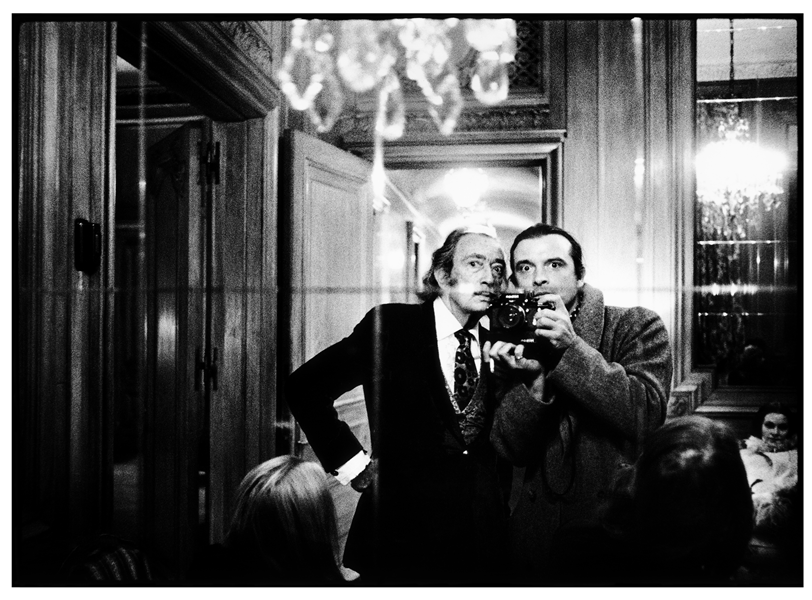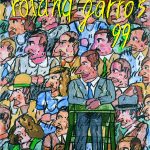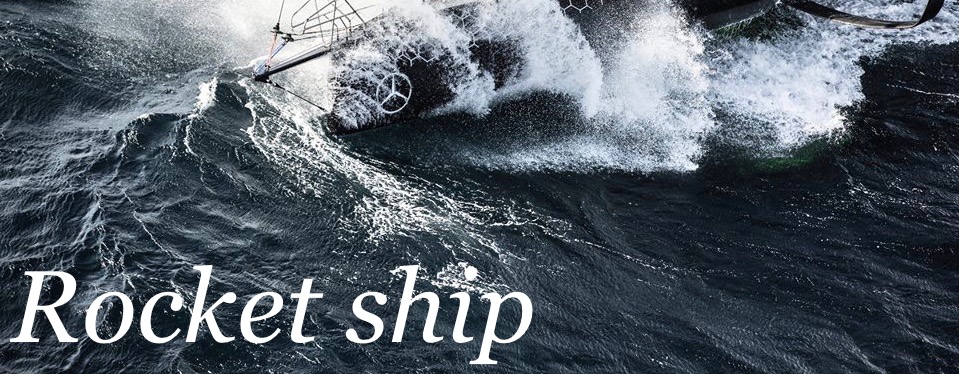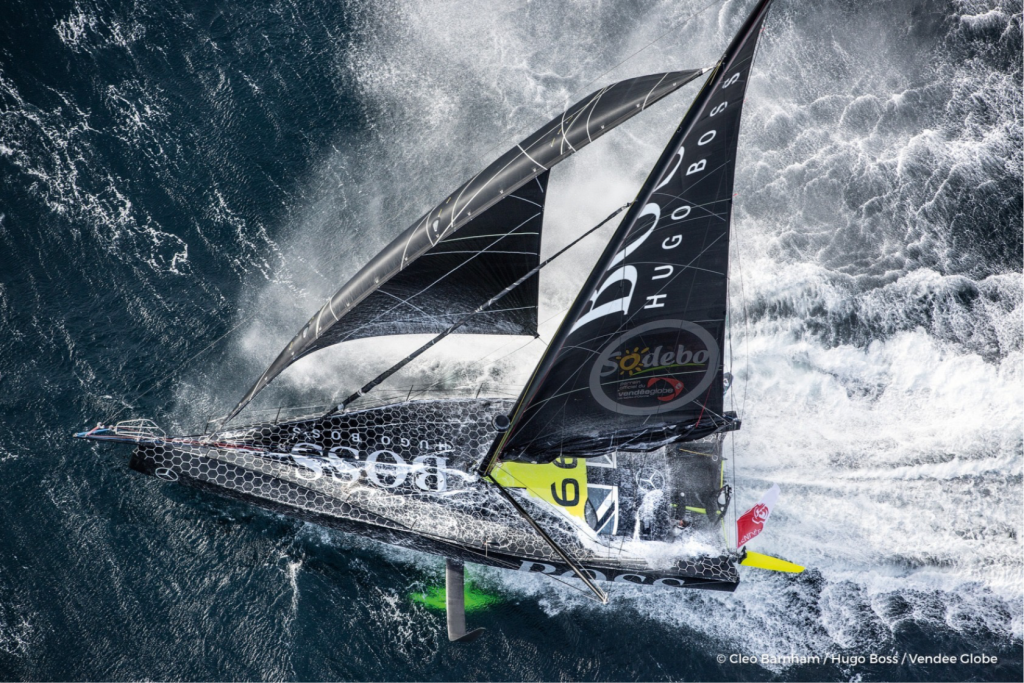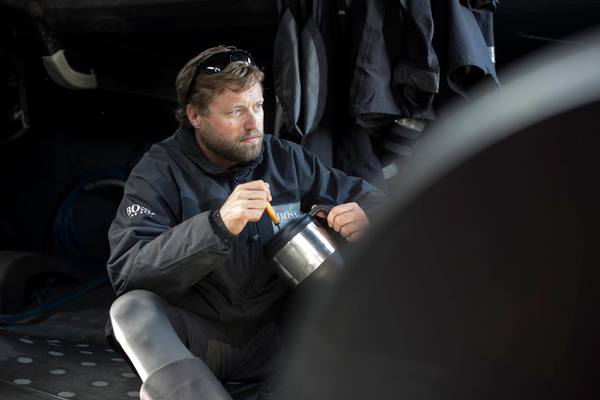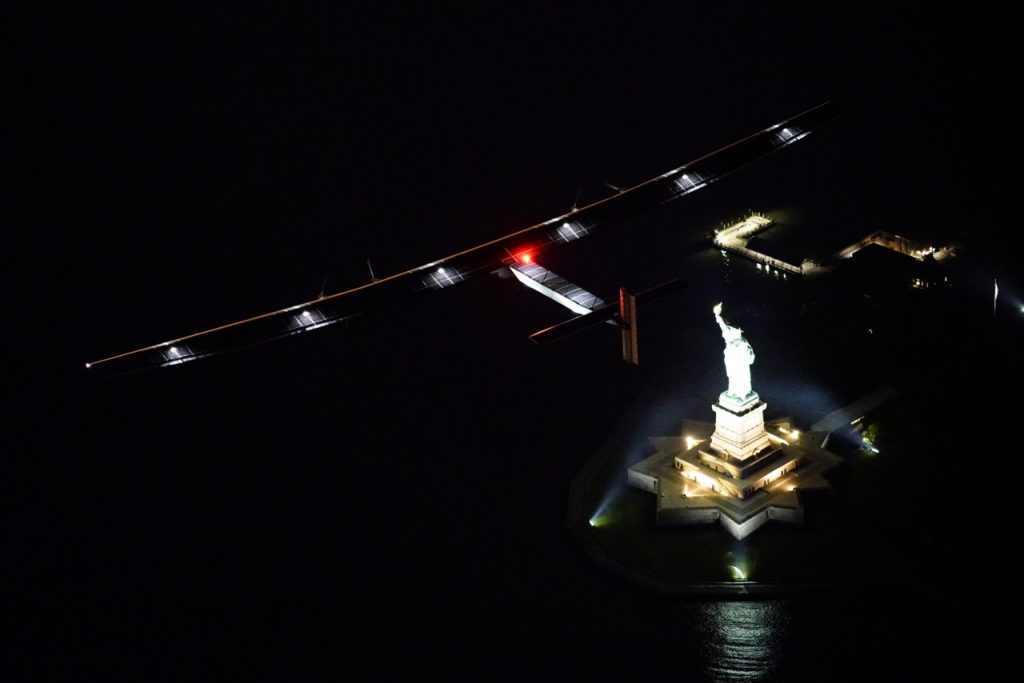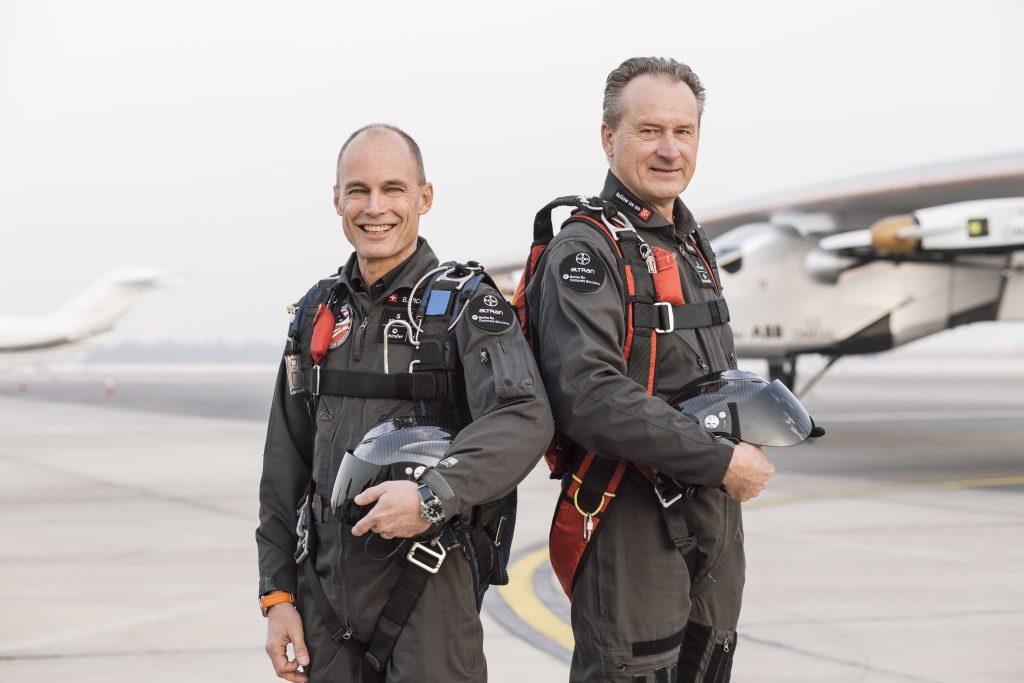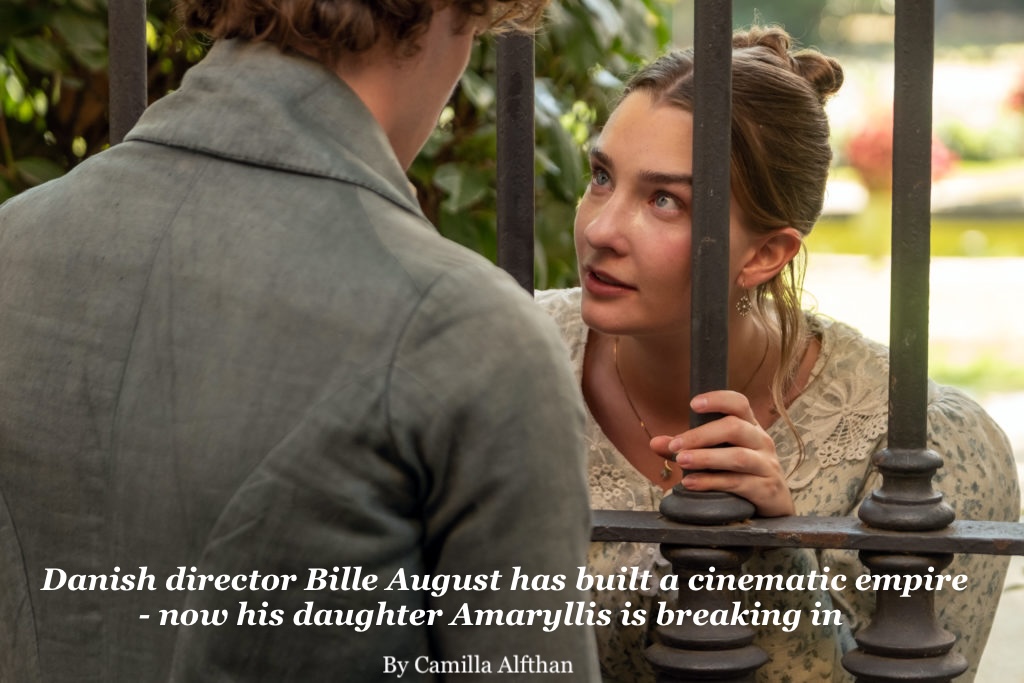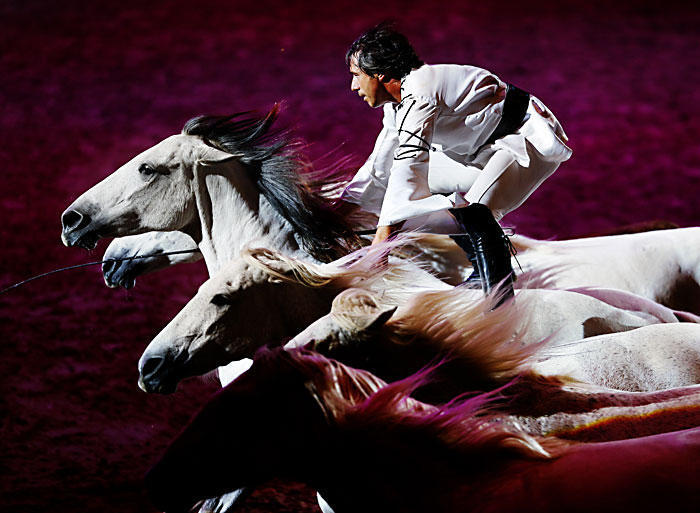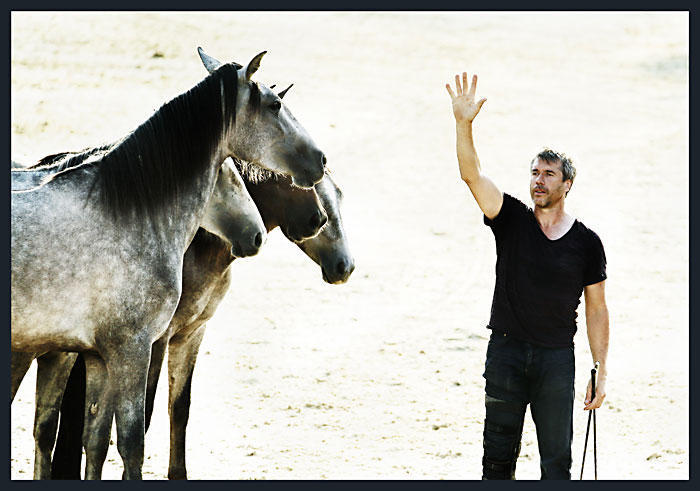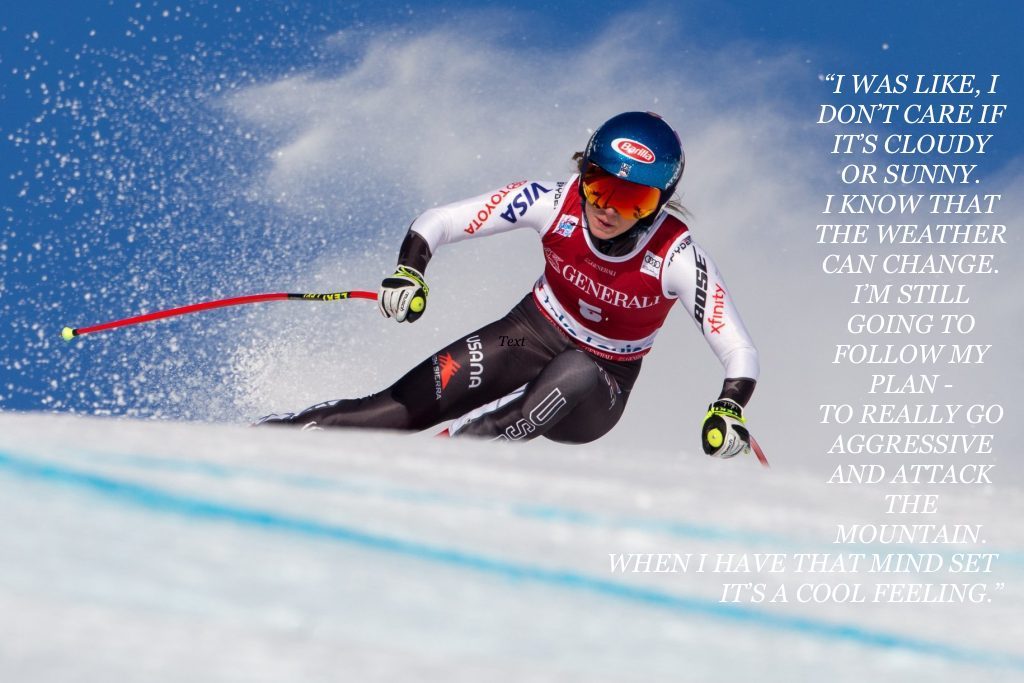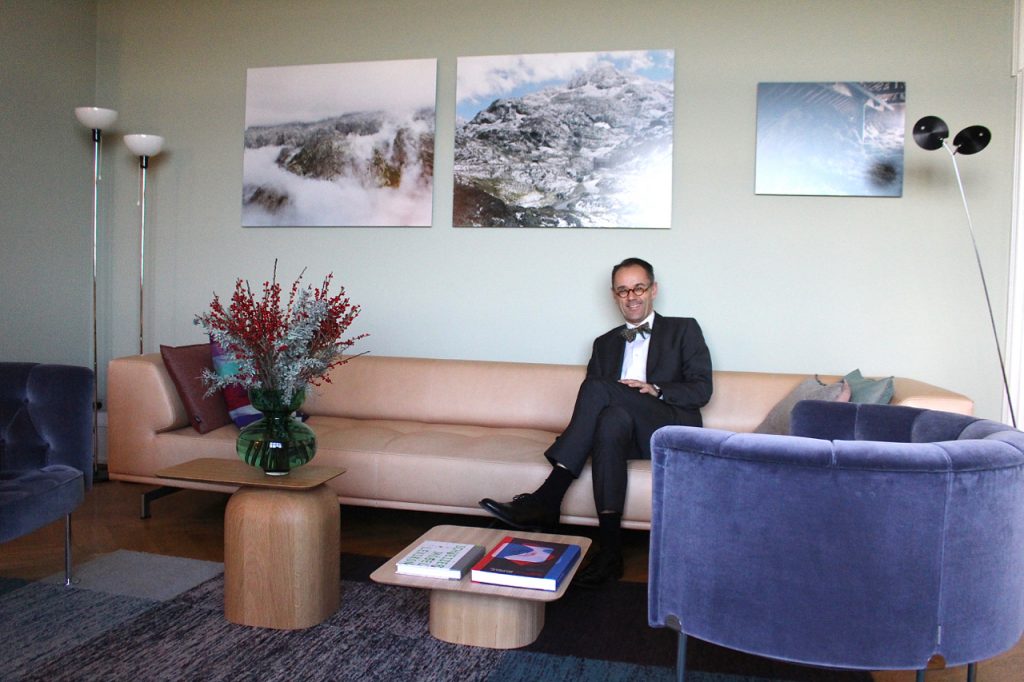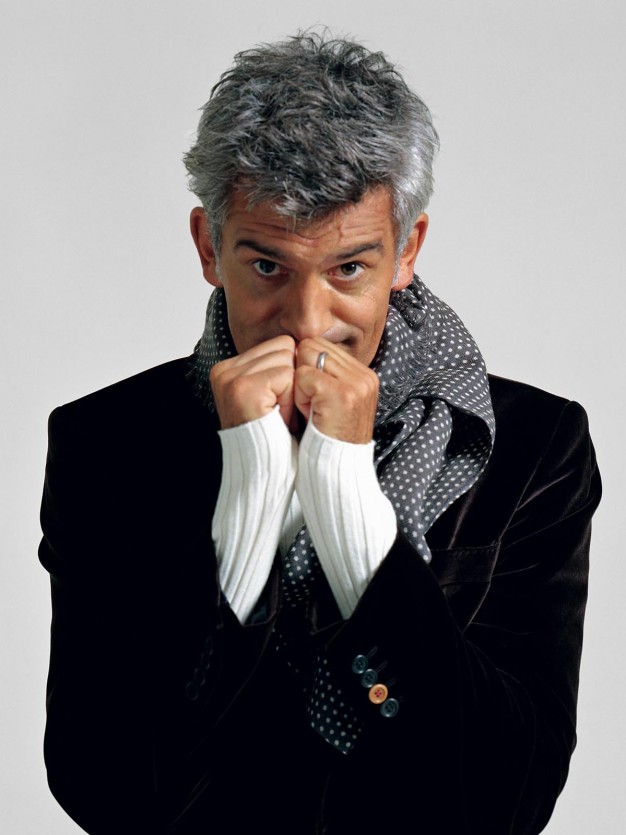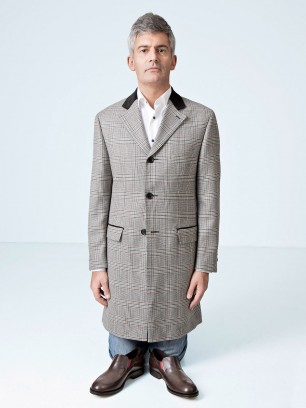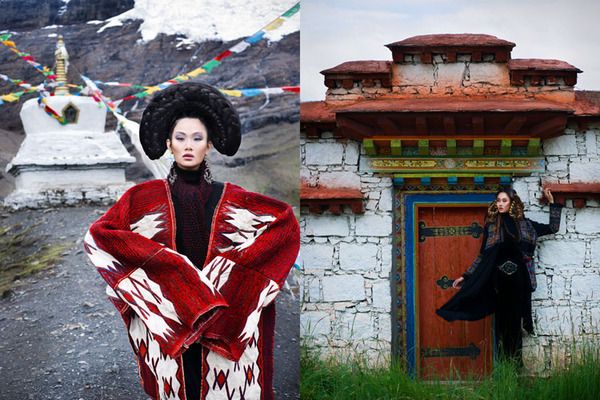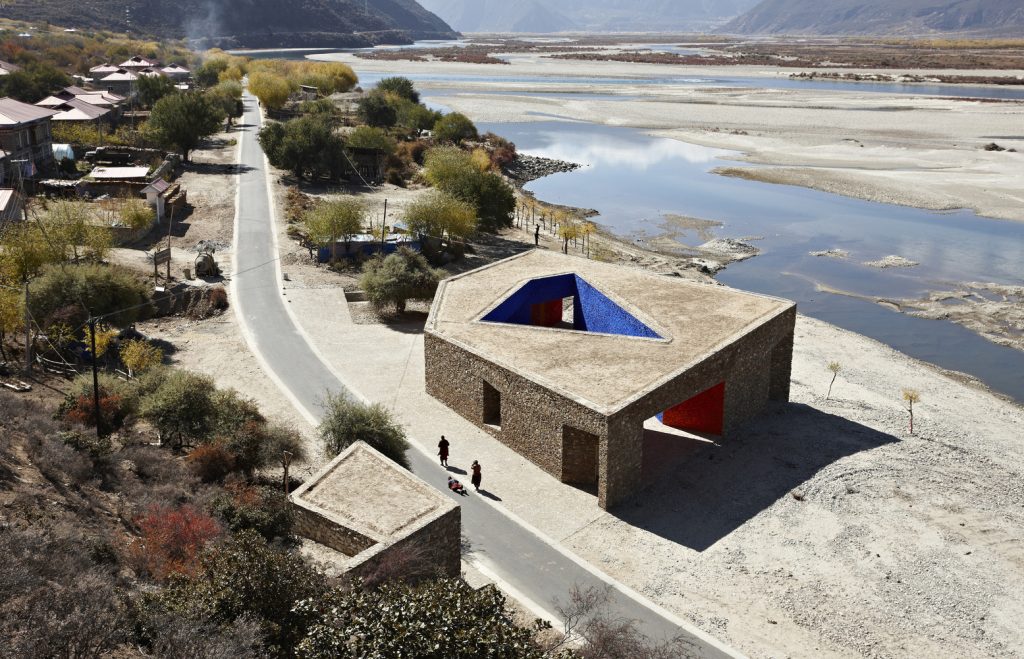The artist
David Bailey with Salvador Dali in the 1970s. “I’m only interested in real photography, not in anyone thinking they can do it because they can’t.”
His striking fashion shots defined the pages of Vogue during the Swinging Sixties. Yet, David Bailey hates being called a mere photographer. For the National Portrait Gallery in London he exhibited some of his best works.
By Camilla Alfthan
YOU BEEN AROUND for over half a century. Is the exhibition a way for you to look back? That’s for people who are bored with what they’re doing now. I’m looking forward to the moment. I’m finding stuff from the past but I never look back.
Were there some highlights that you wanted to put forward? No, I just wanted to make an entertaining exhibition. Superficial people hang on to the Mick Jaggers and the Kate Moss because they are probably the only ones they know or can relate to. I’ve got headhunters and cannibals from New Guinea, starving kids from Sudan. I’m curious of people that haven’t been touched by outside civilisation. I don’t think they’re more pure than us, the human race is not pure, then we would have died out a long time ago.
You once said fashion was the only place to be creative. Is was the only place you could get paid and be creative. Sort of creative. I haven’t done fashion since the 1980s. I do celebrities, people with talent. I’ve never been interested in making money, I always did what I thought was right. Sometimes I do things for charity. The only time I’ve compromised is when I used to direct commercials. That’s an industry, what I do is an art.
“If Jesus Christ came back now he couldn’t get cruxified because we don’t have capital punishment.”
Though art has become quite commercialized. It was always like that. Who sponsored the Italian rennaissance? The Church or the Medicis. The National Portrait Gallery asked me to do it and it’s sponsored by Hugo Boss, they both get something out of it.
Everyone is making pictures these days, has it changed anything? Since the Brownie came in 1900 people have taken pictures. Everyone can do what you do now, or what I do or what Picasso did, so it is about whether you want to do it or not. It’s not because someone comes along with a new gadget that it’s going to change anything. You’ve got 300 million people taking the same picture on Instagram. What’s creative about that, what’s that got to do with your imagination and your connection with the two things?
Michelangelo Antonioni’s classic, Blow Up from 1966 was inspired by you.. Blow Up was just another film, it wasn’t a great film, Seven Samurais was. Also, I’m not a photographer, I’m an artist. I paint, I make sculptures, it’s just a different way of using my imagination and my curiosity.
Are you still as curious as you were then? Yes, of course, I’m more or less the same since I was in my 20s. I would have been the same if I was born in the Rennaissance or in Rome 100 AD, it’s seing things as they are to me. “Be true to yourself”, as Shakespeare probably said first, it’s a good quote.
How important was the zeitgeist of the 1960s – where do think you would have been today? Everybody you’ve ever heard of in history came at the right time otherwise you wouldn’t have heard of them. If Jesus Christ came back now he couldn’t get cruxified because we don’t have capital punishment.
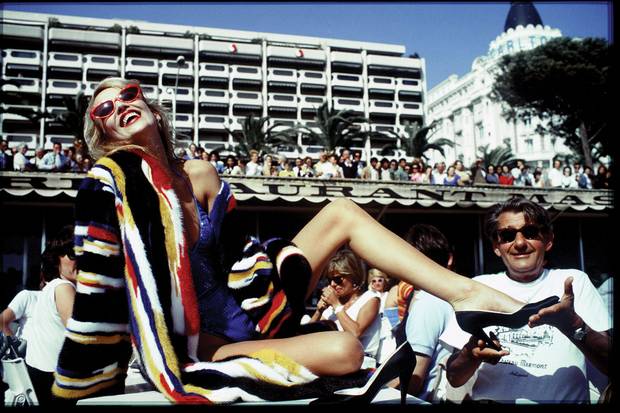
With Jerry Hall and Helmut Newton at the footsteps of the Croisette.
Some people are envious of your lifestyle.. That is just silly people, they couldn’t take the pace, they couldn’t work like I do. I work all the time, I never stop working. I get up about six and I go to bed about two more or less everyday. I’m working on bronzes, sculptures, silk screens, paintings, I’ve painted since I was three. It’s something I do. Some people make coffee, others make things.
So when did you have time for all the women? I’ve been with the same woman for thirty years. All my ex-wives are my best friends. It’s common sense, I don’t see how you can be with someone for five years and then not like them, then they must be morons.
Do you still photograph them? I’m doing one tomorrow. And I did one yesterday. My current wife and tomorrow I’m doing my previous wife. It’s just a coincidence. It’s another day, another time, it is not revisiting, I don’t have a time machine.
And self portraits? Only to stop some boring photographer coming around, spending three hours taking an ugly picture when I can spend two minutes doing an ugly picture myself.
Do you admire some photographers? I’m only interested in real photography, not in anyone thinking they can do it because they can’t. Cartier Brésson, Walker Evans, Helmut Newton, Bruce Weber…there’s lots of great ones and there’s even more who just take pictures. Anyone can take a picture and anyone can make a drawing, by the way. Their drawing is far more interesting than their terrible photographs on Instagram because the drawing tells you more about their personality.
What’s on your walls at home? Mostly Damian Hirst and Irving Penn. But not my own things. It’s bad enough I have to make them, I don’t want to sit and look at them everyday. There’s nothing worse than copying yourself.
“You’re either born with an edge or you’re not.”
But do you rework the same motifs when you paint? Yes, that’s normal. Recently it’s all been based on the Annunciation which is probably the worst painting Leonardo ever did. I like the story, I like the myth of some angel coming down and telling Mary that she’s about to have a baby – that must be quite an emotional chock for her.
Did your background – coming from the working classes – give you a greater artistic freedom? No, I think it was probably a great disadvantage. You couldn’t even talk to those people in the class system the way it was in England in the 1950s. They wouldn’t talk to you if you had a bad accent. It was almost like the caste system in India. You can’t know it if you didn’t experience it. I was lucky, I was also an dyslexic which gave me a edge on lots of educative fault.
It pushed you to do what you’re doing? Probably, yes. You’re either born with an edge or you’re not. I didn’t go to university to get dumb. The school system stinks.
So the school of life is better? I think that’s the source of all the bullshit in life, most people don’t have a chance because they’re too busy feeding their family.
But hasn’t technology changed the way you work? Not really, it hasn’t changed since Talbot invented photography as we know it today. I have a 13th century house in Devon in Dartmoore and I have studios and darkrooms there so I was printing on Christmas Day making images. Whenever you do art, you have to be completely dedicated, you have to be ruthless and do what you want to do otherwise you shouldn’t do it. You have to make decisons whether it’s having a nice, boring life in the country with ten kids or being lonely doing what artists usually do.
What are you working on now? Some silkprints, three books on East End are coming out, three or four books for Taschen, a couple of exhibitions…We’re doing it all the time. I’ll probably do some bronzes soon.
How many books did you publish? I think about 40 if I don’t count the catalogues. It’s like people saying how many models did you sleep with. If you have to count obviously it’s not many. I’ve lost count.
Was it a hundred? Bloody hell, no, it wasn’t a tv game show.
The world has changed a lot since you started..If I was a Marsian and came to earth I’d say, what a strange lot of people they are. One half are killing each other and the other half are watching football on TV. Politicians love TV and football because it’s the opium of the people. It’s not a philosophical view of the world, it is common sense. We’re the most threatening species because of over population. There’s too many of us, that’s why you got so many wars. Forget the Ferraris – there’s too many people in the world and that’s why there’s so much pollution.
But you have three kids. It had nothing to do with me, I was being generous to my wife, it was her idea. I like people once in a while. I’m a bit like a buddhist, I like the person next to me. Less to deal with. ©
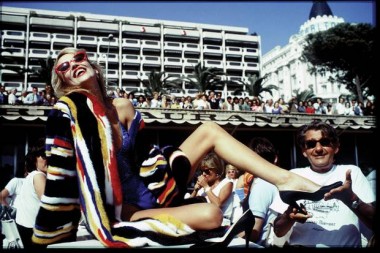
Alex Thomson’s
Sailing has never been faster, more expensive or as technological as it is now. But at the end of the day, it’s still about adventure and a human endeavour, tells solo sailor Alex Thomson.
By Camilla Alfthan
IT WAS THE SAILING LEGEND, Sir Robin Knox-Johnston who taught the British yachtsman to navigate with the moon and the stars. Sir Robin had invited the 23-year old on an expedition to Greenland as his first mate only a few months before the beginning of his iconic Clipper Race which Alex Thomson would win as the youngest skipper ever.
Since then, Thomson has broken several world records, and competed in three Vendée Globes; the Everest of the Seas which was created in the spirit of the Golden Globe; the first non-stop solo race round the globe via the three capes, Good Hope, Leewin and the Horn created in 1968. Of its nine sailing pioneers, Knox-Johnston was the only one to complete the journey after an exhausting 313 days at sea. Today the boats have evolved enormously. When Alex Thomson finished the latest edition of the Vendée Globe it took him just 74 days despite the fact that he was sailing with a major handicap.
“On day thirteen the foil broke, but I still had to go around the world.
That was really the story of the race to me,” tells the 43-year old sailor aboard his HUGO BOSS boat during a visit to Copenhagen. The foil is still missing but he has a crew of three people which is a major luxury considering that he was all alone around the globe. While several competitors abandoned the race for various reasons, quitting was never an option.
“It’s about your goals and about staying positive. If your foil breaks it means your not going to win so you’re not motivated. So you have to change your goals. ‘I can’t win, I probably won’t finish and I’m lucky if I stay in the top ten.’ Then you have to adjust your goals to make them hard but achievable, so that you reach your goal.”
Part of all this was about how do you remain happy?
“It’s not pleasant and I have a huge handicap – a broken foil. It sounds corny. But I genuinely feel that if you walk around with a miserable face you’re probably going to be miserable. But if you walk around with a smile on your face you’re gonna feel a lot more positive. Many sports people like me strive for the ultimate succes because they think that is what is going to make you happy. But I think its the other way around. Being happy is much more likely to get you through to your succes. That’s how I tried to spend my time even if I wasn’t happy at all – I was really pissed off!”
Alex Thomson and his team had three goals in the Vendée. The first was to finish, the second was the podium, the third was to win. “We didn’t really know how good the boat was. I just had to change my mind set and learn to sail it differently. The boat sailed with a lot more lean, so I had to push a bit harder to try to try and keep up. I told myself ‘What would be more positive than winning the race now, that would really make a story’. I tried to look at things in a positive light.”
At lot has changed since the beginnings of solo racing. Now people can follow you daily online.
About 200,000 people watched me and it was really not about the technology. It’s about adventure and human endeavor; its an amazing story. One of the great things we can provide is content. We’re all so starved with content and as long as you can provide something vaguely interesting people will want to watch it and follow it like a football match.
At one point you looked rather scared when you were filming during a storm at night.
Part of it is conveying what it is really like. And in that scenario when it is dark outside and the boat is going very fast it’s quite a challenge.
When you go downstairs it’s pitch dark and the noise is extreme, you know there’s no one who can save you if something goes wrong. You freak out. You’re scared, your brain pumps adrenaline into your body. I wanted to convey what it was like; how I felt.
I have some techniques to be able to deal with the stress and making the videos helped.
“People think we have to be crazy to do it but it is really the opposite.”
They went directly from my phone to the internet, without any editing. They create a huge following and people then write comments that my people send to me. So I inspire them with what I’m doing and they inspire me by their reaction to it.
With my sports psychologist we have a number of techniques to deal with the extreme situations. One of them is the helicopter view. When I’m downstairs in my bed and my brain is going ’you’re gonna die, you’re gonna die’ I can visualize myself not being on the boat any longer. I see it from above at cloud level, I can see where it’s going, how fast it’s going, that there are no detainers, no whales, no icebergs..by doing that it allows me to lower my heart rate, reduce my adrenaline and get some sleep.
You don’t sleep much, either.
I only sleep twenty, or forty minutes. It’s a real management exercise to learn how you manage your sleep. To me the sport is about discipline.
People think we have to be crazy to do it but it is really the opposite.
You’re sailing a sixty foot boat in troubled seas, all alone, that’s a lot to keep track of.. This is a rocket ship. We have the world speed record for our class. In terms of tech this thing is quite unique and my baby. The foils – the wings that physically lifts the boat – are not as extreme as in the Americas’ Cup but a bit like that. The boat is designed with me and for me. It took altogether 40,000 man hours in one year and the design before that took one year. So it took two years to make it and it cost about 4,5 – 5 million euros. It’s not a small amount of change.
One problem is bumping into things. Breaking the mast. There’s potential issues everywhere. There’s an element of luck. But it’s also down to what choices you make. The technical challenges is what I love the most.
How do you produce something which is fast enough to win the race and yet strong enough to last?
If you make it more reliable you make it slower, and if you make it faster you make it less reliable – it becomes more fragile.
Coming back on the Atlantic Alex broke the 24h record whilst sailing on starboard tack and using his remaining foil. “The addition of the foils have really been the main difference between sailing my new boat compared to my old boat. The foils are what makes them reach these new speeds by lifting the boat out of the water, creating less drag.”
And the weather..?
When you sail around the world in 74 days you see it all. The coldest weather was at the end. The last two days the wind was minus 15 and the rails had icicles. I chose to slow down a bit at the end, so I’d arrive at daylight.
You came in 16 hours after Armel L’Cléach. How was it to meet up afterwards – how deep does the rivalry run between skippers ?
The arrival back into Les Sables d’Olonne is incredible, from the channel, all the way to the pontoon and race village, there are tens of thousands of people waving you back in and the atmosphere is incomparable. Being greeted by Armel and being able to shake hands and share experiences from the race is an amazing feeling after competing for so long.
We respect one another and there’s no other sport where it is the same. One of the reasons I love sailing, and particularly off shore sailing, is when you leave sight of land you then have an understanding of how small we are as a human race. And that’s a very humbling experience.
For the skippers, we’re fierce competitors, we’re desperate to beat each other. If something goes wrong we’re rescue services for the other people so the core of the relationship we have is amazing sportsmanship and huge amount of respect.
Is it easier being second during the race – chasing the guy rather than being chased?
In the situation where I was catching up it was terrible for him. He did not speak so much about it but his team did. They said he was a mess. He finished second the last time, and the time before. Twice. So it would have been terrible for him. For me I had nothing to lose.
One former Vendee Globe winner who watched the race said the interviews are the most stressful thing, especially towards the end.
They are part of the job, but the French are not the most communicative people. If something goes wrong they don’t like to say it because they think that might change the way other people compete against them.
Whatever people say to me it’s not going to change the way I sail. I said from the beginning that we’re going to be completely transparent. I took pictures of the foil and sent it to my team who chose not to show it which added to the conspiracies. That made me laugh. These things are extremely expensive to make and take four months to make. It’s not like you’re going to be able to do anything about it.
So I wanted to be transparent. We wanted to be the team that delivered the most content, so we did it everyday. The French public loved it, the fact that I made the effort to communicate.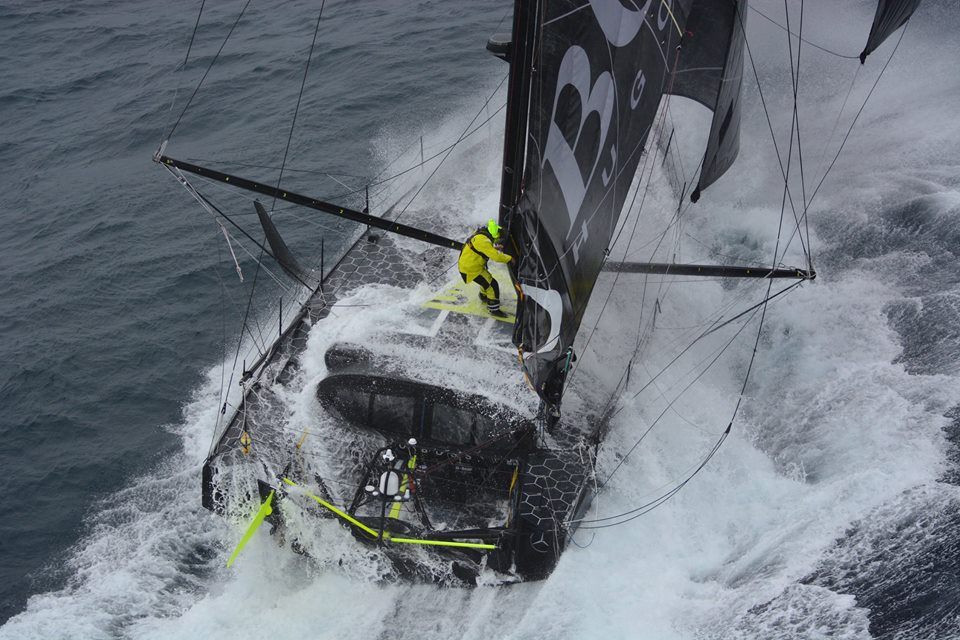
The most viewed video was shot by a French navy helikopter off the Kerguelen Islands when you hoisted the Union Jack. Wasn’t that a little bit dangerous?
It wasn’t dangerous but it looked great.
In terms of rivalry there has never been anything bigger. ‘Les Rosbeef and the Frogs.’ With Brexit – it was amazing. A French journalist said at the press conference, ‘We hope you’ll win next time’. At the end, I shouted ‘Are you ready for a British winner?’ and they screamed ‘Yes!’.
They appreciate the effort and the challenge. They’re an amazing public, they really care for it. If you make an effort they reward you for it.
The technology has become a huge part of the sport.
The boats go bloody fast now and in less wind so my boat goes the fastest in no more than 20 knots of wind. Because we know that, and we use a piece of software that tells us the best way to go, it’s faster not to be in more wind than that. So you choose less wind. The computer chooses it.
How reliable is the computer? In the Gotland Run a few years ago your boat hit rocks that the GPS did not show.
The GPS is not perfect, if we’d been a meter the other way we would have been fine. We should have taken a lot wider birth. The chart is not a 100 percent accurate, either, when you imagine how many rocks you have in the sea there’s always going to be differences. It was a nasty chock but nothing happened. It’s one of the things that can happen, like hitting the curb when you’re driving a gocart.
What happened when you tested the boat in Spain before the Vendee?
We were two people when a wave hit the boat and in less than a second it flipped upside down. Immediately everything was black. My co-skipper said we had to get out. We opened the door and water came in. I said ‘I think we have to go in and shut the doors’. He jumped in the sea to swim away. Before I went in I had the wits to hit the keel button and the boat flipped up again now full of water.
We were rescued by a helicopter. We were in shock and flew to La Coruña airport wearing dripping wet survival suits…They showed us to a little grey door. It opened and we walked though….and we were in arrivals! People were stunned, they were like ‘I’m not getting on his airplane!’. (Laughs). We went straight to the port to rescue my baby. I was quite proud to have done so but my team was devastated, they’d put thousands of man hours into building it. We had to think positively. We picked up the pieces and repaired it. ‘Thank you for showing us the power of never giving up’ they said afterwards. I said, ‘Dont worry – every cloud has a silver lining’.
Long, challenging hours at sea with very little sleep can sometimes make you feel grumpy. But never alone. “I some times feel isolated, but I have my family, friends, and supporters, so I cant feel lonely.”
You’ve compared the sport to Formula One..
There’s huge similarities between the sports. One driver, high speed, and all the technology. Both our sports are governed by rules. What stops development are the rules. We probably have less rules than F1. The structures for instance, we probably have less rules around what you can do with the composites. We’re able to advance technologically.
F1 cars are built with 200 kilos of carbon fiber, there are rules about what you can do. Ours is 2,000 kilos of carbon, the rules mean that we can be more innovative with it.
People who know F1 and who go aboard say ‘Wow, this is really the same’.
I took Lewis Hamilton with me in the Cowes. There was an incident and the press wrote ‘Hamilton crashes again’.
The difference is that you’re racing with sustainable energy – wind power.
We actually took 200 liters of diesel, two tanks of fuel basically to go around the world. Next time we hope to make it completely fossil fuel free. We went from no knowledge to foils working two years later. Once we’ve figured out how to fly on the sea we’ll see some big advances in how to transport goods on sea. We’ll see how the revelation start to evolve now.
One of the things I picked up was how one man on a boat for three months accumulates a lot of rubbish. You see it in one place when normally, you throw it in the bin and you never see it again. I was quite chocked. And I probably wasn’t creating half of what I usually create. It was really quite disturbing.
I ate freeze dried food and had to make my own water. I only carry ten liters of water, so it made me realize how much we consume, and how much we waste. We normally don’t take care of the water. You just turn on the tap, leave it running to get the right temperature. On a boat I dont waste a drop.
You appreciate the simple things in life.
Do you prefer to race with a crew or alone?
The ultimate challenge is to to be alone. In terms of sociability I’d rather be with other people. But on your own the challenge of what you’re doing is incredible. There’s less than a hundred people who’ve done what I do. It’s an incredible privilege to be given the possibility to do it. The competition is very fierce. But it’s a team event to have that boat in that position where it’s about the choices we make. I end up being a small part in that team. By the time the race starts its less stressful than the build up.
We have the highest class. Whether I have a fast boat or a slow boat I still do my work at sea.
In the last two Vendées Alex Thomson came third and second, which means that a first place in the 2020 race is his next goal. When he’s not racing he’s invented stunts for his longtime sponsor, Hugo Boss – kite flying above his boat, walking on the keel and even on the mast dressed in a Boss suit
Sir Robin Knox-Johnston has played major role in your career and also Sir Kenneth Miller.
Kenneth is a passionate sailor and sportsman. He created Sportaid for disadvantaged children to empower them, and he’s the man who got the 2012 Olympics to London.
He is my financial mentor. We met in the Clipper race where he came as crew and became friends. We talked about the Vendée Globe as the ultimate challenge. When I was back home he sent me a parcel in the post which had a plaque inside with a picture of a boat and a sun, and the inscription ; ‘Risk – If you want to discover new worlds – at first leave sight of the shore.’
I phoned him and thanked him for kicking me in the arse. He said I had what it took to participate in the race. He wanted to help me prepare for it, and make a business out of sailing. We contacted 900 companies over the course of a single year.
He ended up buying me a boat for 1,1 million pounds. It was a big risk for him. It was also a time when I got my first world record, and other records.
How much is about luck?
People always talk about luck. In sports when you get your details right you suddenly get lucky. Its about having a positive attitude. You learn from your mistakes, and you improve. So in a sense you celebrate your mistakes because they take you further. It is from our mistakes that we learn the most.
©
Sailing with Alex Thomson in the Gotland Run – an awe inspiring experience which required work around the clock to keep ahead of the race. My task was snap shooting the adventure and interviewing the boys; the kind of work that makes journalism great fun.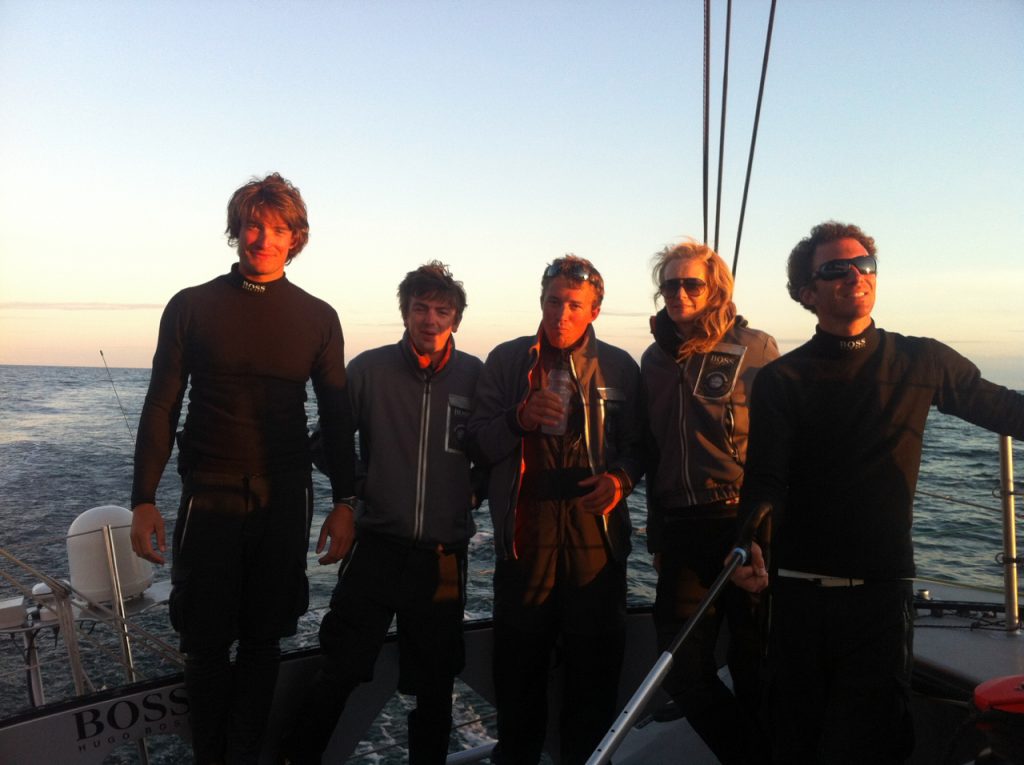
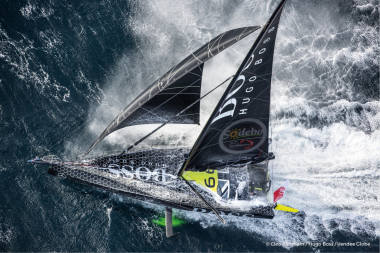
Flying high
“You know, some people have no imagination,” said the Swiss explorer, Bertrand Piccard when I met him and his co-pilot, André Borschberg at the Solar Impulse HQs in Lausanne. Both wrote history when they flew around the globe in their solar powered plane without using as much as a single drop of fuel. No one thought it was possible though the techniques they employed had already been invented. Now the work continues with The World Alliance for Efficient Solutions with the aim to find 1,000 solutions for a greener, and cleaner, future.
By Camilla Alfthan
CA VOUS FAIS quoi de voir les images de votre tour du monde après avoir été isolé dans l’avion?
BERTRAND PICCARD : Ca nous ramènent immédiatement dans les émotions, l’ambiance et l’atmosphère. Quand on est dans le cockpit c’est un moment magique. On voit les moteurs qui tournent uniquement par l’energie solaire. Il n’y a pas de pollution, pas de bruit et c’est la realité – c’est même pas la science fiction. Mais il faut pas croire qu’on est complètement isolés. En même temps on est en relation avec du monde entier par téléphone satellite avec l’équipe à Monaco, avec les interviews et avec l’autre pilote qui ne vole pas. Donc c’est jamais monotone, c’est toujours fantastique.
ANDRE BORSCHBERG : On a le temps aussi. On est pas sous la pression d’arriver à une heure déterminée. Le but c’est d’arriver avec cette énergie là, et c’est pas important si on prend un jour de plus. C’est l’un des rares moments où on a pu vivre le présent et où on est vraiment dans ce que l’on fais; c’est le mindfulness. C’est un luxe et c’est une découverte aussi.
C’était aussi un tour avec des défis.
BP : Il y a eu tellement des moments sur le sol où c’était vraiment difficile, où on attendait le météo et savait pas, on attendait les autorisations techniques qui venaient pas et il y avait des problèmes techniques. Au sol c’était pénible. Le contraste avec le moment où on décolle, quand on se trouve dans la beauté de la nature avec cet avion completement écologique…c’était magique!
AB : Il fallait décoller pour cela et c’est vrai que le suspense de décoller ou pas décoller étais tel qu’il arrivait des fois trois minutes avant décollage que on a decidé de pas aller. Pas parce que on avait pas le technique mais parceque l’on se dit, “non, c’est pas le bon moment”, il faut savoir renoncer. Quand on était en l’air c’est là où on se dit vraiment,”Maintenant, c’est partie!“.
BP : Un vol Solar Impulse n’existe dès que l’avion est en air, et à la fin du vol quand l’avion est rangée dans le hangar. Parce que tout peut arriver au sol.
Vous avez eu la chance..
BP : Nous avon eu la chance mais aussi beaucoup de complications. Quand le hangar mobile s’est dégonflé par dessus Solar Impulse, quand André était au Japon est il a commencé à pleuvoir et quand on avaient pas encore le hangar mobile gonflée..
En Hawaii c’était le batterie qui avait surchauffé – c’était un problème opérationnel de notre équipe d’ingénieurs qui l’ont monté et remonté trop vite pour faire un test au début du vol vers Hawaii et ca a complètement perturbé la fonctionnement du batteri.
On a l’impression que vous êtes devenu très proches..
BP : On a travaillé ensemble depuis treize ans, et moi, j’ai commencé ce projet il y a quinze ans. On se d’abord rendu aux Etats-Unies pour voir ce que l’on pourrais faire, puis j’ai proposé le projet à l’Ecole Technique Fédérale. Ils ont accepté de faire une étude de faisabilité et ils on proposé André qui étais un consultant à l’extérieure de conduire cette étude de faisabilité. C’est comme ca que j’ai rencontré André.
Je me suis dis que quelqu’un qui a autant de différence de moi allais me permettre de créer une relation trés synergique. André est pilote d’avion, moi je suis pilote de ballon. Il est ingénieur, moi je suis psychiatre. Il a crée des start up comme entrepreneur, moi je suis explorateur.
Donc c’etais une relation où chacun est l’inverse de l’autre et c’est ca qui est fantastique. Si on veut créer quelque chose il faut avoir des gens différents; il faut pas travailler avec des gens identique.
AB : On a aussi beaucoup de choses en commun. Je pense que chacun avait son rêve à lui mais on a un monde commun où on se retrouve dans les aspirations profondes. C’est a travers de ce monde que l’on a trouve notre partenariat, et heureusement on est trés différents. On a pas la même approche et je sais qu’il n’as pas le même avis, mais je me réjouis à voir ce qui va m’encore sortir! De quel angle il va venir!
BP : On se surprend toujours.
(Rires)
“Je me suis dis que quelqu’un qui a autant de différence de moi allais me permettre de créer une relation trés synergique. André est pilote d’avion, moi je suis pilote de ballon. Il est ingénieur, moi je suis psychiatre. Il a crée des start up comme entrepreneur, moi je suis explorateur.”
C’étais en effet votre peur de ne pas avoir assez de carburant lors du vol au ballon qui vous a donné l’idée de voler sans dépendance d’éssence fossile?
BP : Voler perpétuellement sans limite. Théoretiquement sans limite.
Vous avez jamais eu peur?
BP : Vous savez ce qui me fais peur? C’est de vivre dans un monde qui brûle un million de tonnes de pétrole par heure qui détruit le climate, qui perturbe l’environment, qui détruit les ressources de la planète..ca me fais peur! Quand on vole dans un avion qui est bien construit, qui bien est testé et que l’opération de vol est bien menée c’est un cadeau extraordinaire, c’est un privilège.
AB : C’est une découverte..
Quelle est la différence de vol entre Solar Impulse et un ballon ou bien une avion de chasse?
AB : La première chose c’est le sentiment d’être complétement indépendant. Vous avez l’énergie de voler sans interruption. C’est un sentiment de liberté qui est extraordinairement fort et puissant. Un avion qui mélange les meilleurs des technologies à ce que la nature donne et s’intègre dans la nature. On a une harmonie. C’est aussi cette réussite – ce que l’homme fait et la nature qui est notre monde. C’est très fort.
Ca se compare avec le paragliding?
BP : Le paraglider a besoin de l’ascendence thermique pour rester un vol et c’est souvent des vols courts. Quand vous partez vous espérez de trouver les points d’ascendence et vous pourrez pas traverser des océans.
AB : Nous, on fonctionne avec la nature et on a une harmonie avec la nature grace aux technologies propres qui utilisent cette force. Donc c’est une alliance de la technologie et la nature.
Et pour dormir?
BP : C’étais beaucoup plus courts. Le ballon a duré vingt jours et quand j’ai rentré l’absence de bruit m’a réveillé pendant deux semaines où je me suis réveillé en criant.
Et dans l’avion?
AB : Quand il fait nuit et vous allez dormir vous entendez toujours des petites bruits.
BP : Le craquements? Tu m’as réveillé, quand tu m’avais dis qu’il y avait des craquements et tous ca. (Rit)
AB : Le petits craquements, les petits décochements, il y a des interactions sur les différents fréquences. Si il fait nuit vous commencez à entendre des pétits chose. Imaginez que vous êtes seule dans le jungle, vous fermez les yeux et il fait nuit, vous allez entrendre plein des petits choses et vous allez imaginer qu’il y ait un tigre en train de rentrer chez vous, ou un serpent qui vous serre le cou! Alors c’est un peu la même chose. Finalement, il faut avoir confiance en cet vol quand il faut se reposer. Pour moi c’étais très étonnant au début.
Le fait que vous avez construit l’avion, ca vous rassure?
AB : Oui, c’est un peu ca. J’ai perdu une fois pendant le vol une partie de l’entoilage qui se trouve sous l’aile et qui se détaché, donc c’est vrai que ca m’as peut-être marqué parce qu’au moment c’étais un peu délicat. Mais c’est vrai, on est un peu plus sensible à se demander, qu’est ce qui se passe, est-ce qu’il y a quelque chose en train de se passer, est-ce que c’est un signe qui me dis qu’il y ait quelque chose en train de se passer. Chacun a ses experiences et chaqu’un a son monde.
BP : Il y a des fois où il fallait se forcer à dormir. Je me rappelle une fois pendant la traversé de l’Atlantique et il y avait la pleine lune avec des reflets extraordinnaire sur l’océan. Et puis, je dormais vingt minutes et je me suis dis; “J’envie de regarder ca, j’ai pas envie de dormir”. C’est pour ca que le temps de sommeil étais dans le temps de travail. C’est pas autant de plaisir. Je me suis rendormi et puis au levée du soleil extraordinnaire le deuxième matin je doit encore dormir. Et c’est triste parce que c’étais tellement beau.

Le premier vol Solar Impulse a eu lieu en Suisse en juillet 2010 © AFP PHOTO/FABRICE COFFRINI/SOLARIMPULSE
Comment vous vous êtes préparé pour cette aventure?
AB : On s’est entraîné dans des simulateurs, sept heures pendant la nuit sans dormir et sans manger. Techniquement vous testez. Mais les émotions on peu pas les simuler. Les émotions c’est quelque chose qui se développent au cours du vol, c’est là où vous devriez gérer.
BP : Moi, j’ai utilisé l’auto-hypnose pour gérer ca. André le yoga. Dans le film vous voyez André faire le yoga au cockpit.
AB : Il y a la coté physique et puis, il y a un coté mental. Vous avez des techniques de respiration pour vous soulager du pression de l’extérieur. Prendre un peu de distance par a ce qui se passe et calmer le flux d’idée, le flux de pensés que l’on a dans le cerveau. Donc ca permets de réposer le cerveau sans dormir. Ce techniques il faut s’entrainer – moi je fait pendant dix ans et Bertrand a développé sa technique d’auto-hypnose.
BP : C’est vrai que j’ai utilisé l’auto-hypnose pour rester éveillé dans Solar Impulse et on peut aussi l’utiliser pour dormir, mais il y avait tout le temps des alarms donc c’est trés rare de pouvoir faire vingt minutes de suite. La masque à oxygène est extrêmement désagréable et j’ai utilisé l’autohypnose pour être bien. C’est super bien pour augmenter l’energie du corps, en effet j’avais moins de stress après trois jour en Solar Impulse que quand je prend la voiture pour aller à Zürich. C’étais vraiment marrant. Alors, maintenant quand je roule en voiture après deux heures je m’imagine que je suis deux jours au Solar Impulse et je vais très bien.
Alors maintenant; c’est le anti-climax? Le fais que la grande aventure est fini?
AB : Il y a un mélange des differents sentiments. Il y a un nostalgie et finalement ca se fait pas parce que on est deux, mais parce qu’il y a une équipe dans le vol et autour du monde, 140 personnes.
Chaque personne qui a participée, si c’est le téchnicien ou la communication, a contribuée au succes de cette mission. L’équipe c’est des gens qui sont extrêmement proche parce que on a partagé des choses très forts. Quand on se sépare de ces gens c’est la nostalgie. La vol est fini mais le projet continue.
BP: On a pas chaumé depuis la fin du vol. On a pas eu la possibilité de s’assoir tous les deux, André et moi, pour se dire, “Ca y est. On a réussi!” Chaque fois c’est la course, des interviews, des cerémonies, des récompenses, des conferences, des film que l’on montre, des séances photos, mais le fait de s’assoir et se dire, “On a réussi, on profite”. Ca on a pas pu faire.
AB : On a un livre qui sort fin janvier, et j’ai impression que ce là ou on pourrait vraiment finir notre tour du monde.
BP : Après la dernière atterissage on a su que l’on allait réussir. Il s’est passé tellement de choses.
AB : Tout le monde nous a surexcité pour éviter de faire la petite faute qui gâcherais tout. Vous avez une montée d’adrenaline qui est de suspense et qui donne l’energie.
Comme Lindberg quand il a traversé l’Atlantique.
BP : Quand il est venu la piste était totalement pleine de gens donc il pourrais pas d’atterrir toute de suite, il a du faire la passage à l’écart.
Aujourd’hui, pensez-vous que les gens ont vraiment compris votre reussite?
BP : Il y a des gens qui comprennent et il y a des gens qu’il comprendront jamais. Vous savez, il y a des gens qui n’ont pas de capacité d’imagination. Il y a des gens qui disaient que la premier avion sert à rien. Il y a des gens qui ont dit que la première voiture servira à rien. Parceque, autre fois avec une voiture il fallait qu’il y ait quelqu’un qui marche avec un drapeau pour avertir les piétons qu’il y ai une voiture qui arrive. C’étais considéré comme sans avenir. Il y a des gens qui ont dis que les ordinateurs ca arriveraient à rien.
AB : Comme le téléphone…
“Vous avez, il y a des gens qui n’ont pas de capacité d’imagination. Il y a des gens qui disaient que la premier avion sert à rien.”
BP : Mon arrière-grand père – quand il avait installé le premier télephone en Suisse dans son bureau et à sa maison, il a invité tous ces collègues qui étaient des professeurs de l’Université à Bâle, et tous ces collègues ont regardé quand il a dis “J’ai téléphone à moi femme.”. Il a téléphone à sa femme et ces collègues ont dis; “Ecoute, Jules, c’est trés intéressante mais ca n’a aucun avenir!”.
Alors pour nous, Solar Impulse, c’est le début de quelque chose nouveau, un noveau cycle. Il y a des avions electriques dans dix ans avec moins des 50 personnes pour des courts courriers. André a des trés jolies idées pour le moyens de transport urbans electriques.
AB : Depuis qu’on a commence il y a treize ans il y a eu une evolution. Il y a Tesla qui ont fait la voiture électrique avec la prise. Solar Impulse prend l’énergie du soleil alors que vous pourrez prendre votre energie où vous voulez. C’est pas perdu comme un moteur au piste où le deux tiers de gaz que vous émettez serviraient à rien. C’est la chaleur, c’est perdu. Deux litres de pétrole sur trois, think about it! Donc l’énergie électrique est efficace, s’est silente. Ils developpent des avions électriques qui peuvent décoller verticalement d’un immeuble à l’autre. C’est le vertical take off, autonome, silencieux, et sans de pollution. Ce qui était la science fiction dans les bandes dessinés il y a dix ans est devenu la réalité grâce a la propulsion électrique. Ce qui était une énigme il y a treize ans devient la realité.
BP : Et puis, maintenent Solar Impulse a fait bouger la coté technique. Alors maintenent il y a la côté politique, de faire écouter les politiciens, et ca c’est le but avec iMondial pour rassembler toutes les professionnels de cette téchnique de manière à pouvoir créer une immense réseau qui amène des solutions. Dans moins de deux ans je me suis engagé à trouver milles solutions et les rendre rentable et efficient pour protéger l’environment. Les gouvernements ont besoin des négociations politiques. Alors, ce qu’il faut c’est des moyens et des solutions techniques pour y arriver là à ce but. Sinon c’est le wishful thinking.
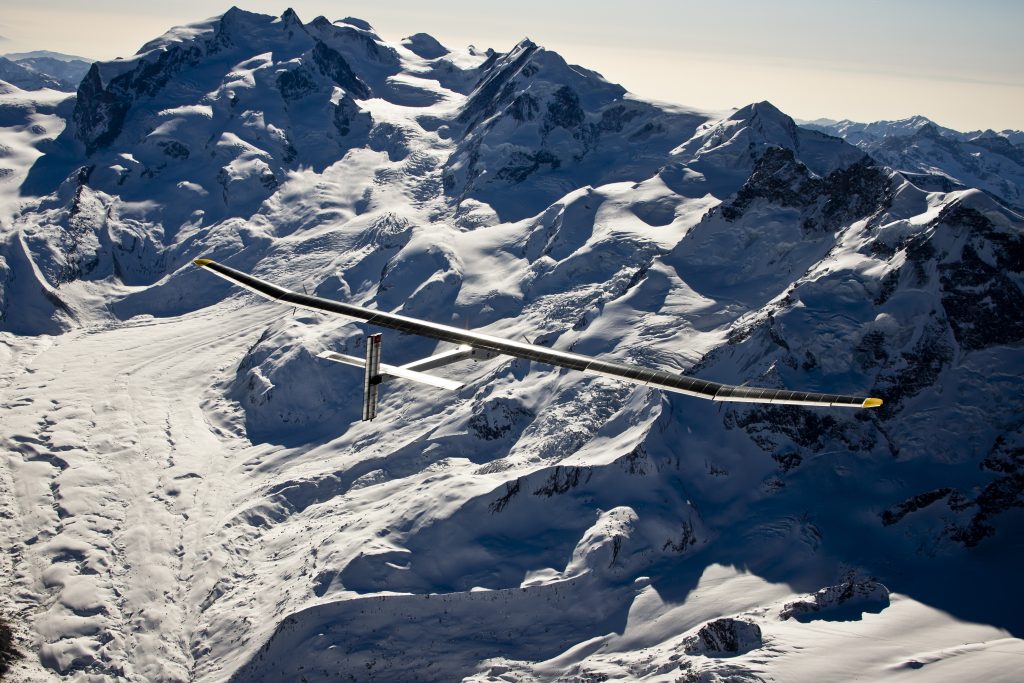
Un vol solaire en 2012 – trois ans avant la première étape autour du monde. Les 40,000km sans carburant étaient une première pour les énergies propres.
Qu’elle est l’avenir avec Donald Trump qui veut réintroduire le charbon?
BP : S’il veut la croissance, il sera obligé de développer des techniques écologiques. Parce que c’est ca qui fais la croissance; pas les vieux systems. Vous avez des voitures électriques, des lumières led, des panneaux solaire, tous ca c’est nouveau.. mais il voudrais aller en arrière avec le charbon.
Donc vous faites le lobbying pour ces techniques?
Quand j’annoncé l’alliance de iMondial il y a eu énormément d’espoir. Ils attendent tous de cette travail, même les G8. J’ai parlé beaucoup aux hommes politiques. Ils sont tous un peu dispersé, ils savaient pas comment l’utiliser. Ce qu’il faut maintenent c’est de faire le lien entre ce technique et les hommes politiques. C’est le but de la fondation.
Vous saviez tous ca quand vous avez commencé cette aventure?
BP : Moi, c’étais mon but. C’étais pour avoir un outil crédible qui puisse communiquer ces techniques écologiques.
AB : Nous avons des partenaires qui viennent des differents cotés, c’est pas des partenaires aeronautiques. C’est la chimie, la technique, les ascenceurs, les gens qui deplace des gens qui voudrait le faire d’un maniere efficace. Donc ils souhaitent de trouver des solutions efficaces. Toutes les produits qu’on a crée ils trouvent leur places dans d’autres applications. Par exemple le batterie va maintenent aussi dans des refrigérateurs pour les rendre plus efficace avec moins de consommation d’energie. C’est sont des solutions simples. Mais c’est là où on fais des économies. C’est là où on va changer.
BP : Au Cop 22 il y avait un interêt enorme, c’étais un méssage positif, un message d’espoir. La receptivité des gens sur place étais extraordinaire. Le Maroc a une programme extraordinnaire. Le roi a un but d’avoir 52 pourcent de l’energie vert dans 30 ans. Il va y arriver.
Finalement, dans une année sombre Solar Impulse étais une rayon de lumière.
BP : Ce ca que le médias ont pris – l’espoir.
AB : On veut montrer que les choses impossibles sont réalisables. Notre projét montre que ce qui a l’air difficile et impossible est quand même faisable. Ca ouvre chaque fois le monde quand on discute avec les gens. C’est la plaisir aussi – le chemin pour y arriver étais la meilleure partie de ce projet. ©
Solar Impulse au hangar. La propulsion électrique, le ‘H55’, est la dernière aventure d’aviation dirigé par André Borschberg.

Frida Lyngstad
YOUR LATEST single is about the 150th anniverisary of the ascent of the Matterhorn. Do you climb yourself? When I was younger I climbed a great deal. Now I ski a lot, sometimes off piste and heli skiing. I did the Haute Route from Verbier to Zermatt. It takes a great deal of physical effort – you carry your skies on your back and walk with leather underneath them as you’re going up. Once you’ve reached the top you ski down the most incredible, untouched snow – then you’re happy. After that, there’s other mountains to climb – a bit like life with sadness and disappointments in between moments of happiness and joy.
How did you end up in Zermatt? I moved here after I lost my husband 16 years ago. We already had some property and I sold our house in Friburg where we’d lived during many years. I’ve here now been for 15 years and in Switzerland for over 31 years. I’m very comfortable in the midst of nature surrounded by the mountains.
Do you sing in the mountains? No, I don’t. You really must be focused at what you’re doing and where you put your feet so you don’t fall down. Mountain climbing always fascinated me – people who affront challenges where it’s just themselves and nature and you’re not quite sure of what could happen. If it is fortunate or if something could go wrong. There’s risks with the crevises of the glaciers and lose rocks but they do it anyway. As creative people we always need new challenges and to have new goals.
You used to sail – was that also a risky sport? Not at all. (Laughs.) I sailed with Benny (Andersson) and the most dramatic event was when we’d anchored in a fishing net on the western coast of Sweden. We started drifting and couldn’t sleep all night. The next morning we had to get help from the coast guards to get lose. They had to take the boat up on land to untangle us.
“I’m a pedantic and honest person. I have X-ray eyes and I see everything. It sometimes drives me crazy. “
What are you doing now? I’ve designed a skiing overall which J. Lindeberg is producing and I’m very happy with it. I’m writing about my life. It could be a book, a musical or a film; I don’t know yet – I’ve written a lot in my life but never a book. It takes patience and discipline which is not always easy to maintain. My boyfriend pushes me – he thinks it’s a great idea and for me it’s important to have a goal to work towards.Music always played a major role in your life.. Music has ruled my life. When you come from a modest background you use your talent to move on. You challenge yourself and you ascend certain mountains. Music has been in my life for over sixty years. It’s been with me on the path to happiness and it’s helped me through sorrows. It is interesting how music affects people, how it can help in many situations. Personally, I like all sorts of music. Opera, classic, pop, jazz, hiphop.. And sometimes just silence.
Do you miss the days with ABBA? No, I don’t miss ABBA. It’s been forty years since we started and it was a different time. I don’t miss working as intensely as we did then. As you get older you want to take it easy. I don’t perform and I don’t want to stand in the limelight. We were young and had a drive – it would never work now. As Björn says, ‘ who wants to look at a bunch of old people?’ It’s better that you remember us from our youth. Besides, we all do different things now. Just because you’ve performed it doesn’t mean that you’ll be doing it for the rest of your life.
Now you’re in a museum in Sweden – how does that feel? Björn took responsibility for the creation of the ABBA Museum at Djurgården in Stockholm. He wanted to make sure that it would be exactly the way we want it instead of leaving it to someone else and then not be happy with the result. Thanks to his initiative it turned out great.
Which of your own traits do you like the best? That I’m a pedantic and honest person. However, sometimes I like my pedantic side the least. I have X-ray eyes and I see everything. It sometimes drives me crazy.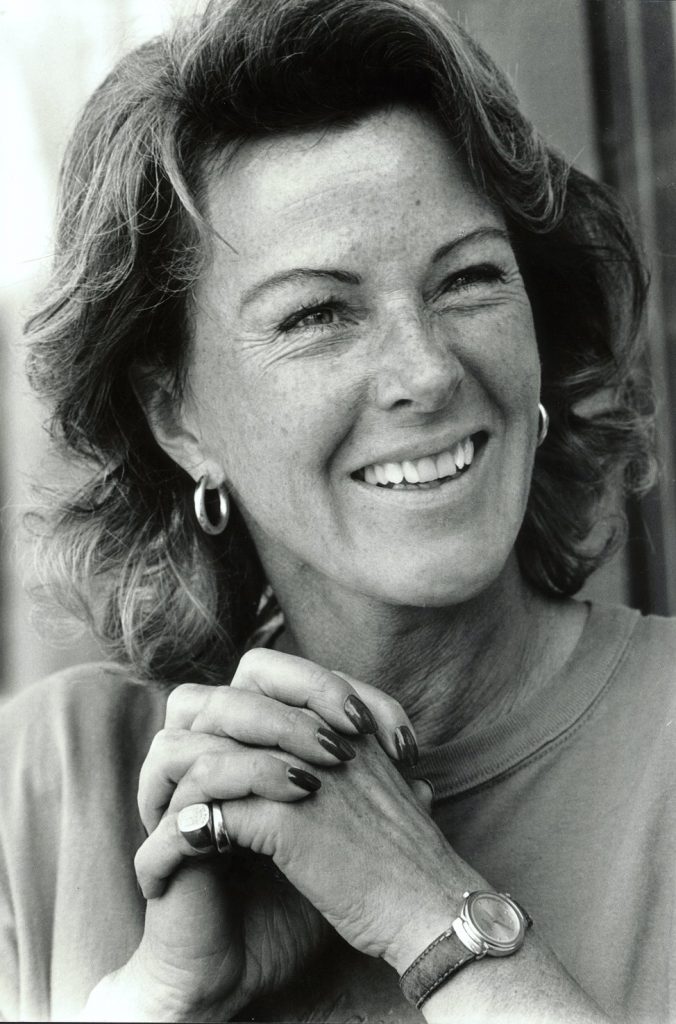
If you could change something what would that be? I guess nothing. I like myself the way I am. It’s the contradictions which makes you the person you are.
If you hadn’t been a singer what would you have done instead? At school I got my best marks for gymnastics, drawing and music. If I hadn’t chosen music I would’ve become something within design – fashion or interiour design which also interests me.
Who do you admire? Children who despite a difficult childhood use their inner strength and drive to create a good life for themselves. I work with charities for children as it’s extremely important that we adults are there for them. They need mentors and idols for their continuous growth.
You were brought up by your grandmother? Yes, recently, when they commemorated the Holocaust victims I was thinking about that and where I come from. I wasn’t Lebensborn as people often write – I was born in November 1945 when the war had just ended. My father was a German officer in Norway when he met my mother. My grandmother took my out of there when my mother passed away. I’m the result of a love affair. It wasn’t popular in Norway to be seen with the Germans but I can understand their relation. You always seek love.
What do you find is the worst tendency in the world that we live in today? It’s terrible with the terrorism all over the world which creates fear and hatred. I cannot tolerate that you treat anyone differently just because of their religion and I cherish everyone who stands up for diversity and different thinking.
Do you have a motto? To live in respect and peace with everyone despite their religion, sexuality or race.
What is the best thing anyone ever said to you? ‘I love you’. It could be anyone – an adult, a child or a fan.
When do you feel the most sexy? That’s a funny question to someone who is almost 70 (laughs). I think I look good – I’m happy with myself. The sexiest thing is when a person feels good about herself. ©

The Count of Monte Cristo
WITH A CAREER spanning over five decades, and awards that include two Palmes d’Or and an Oscar, Bille August has long put his mark on the Danish film industry. His fresh-faced daughter Amaryllis, who features in August’s latest release The Count of Monte Cristo, is just starting out. Here, Vogue Scandinavia sits down with the father and daughter in Copenhagen to talk about how the new release is a milestone for both
“The film has an important message which is about what revenge does to you,” says celebrated Danish director Bille August of his latest endeavour: Alexandre Dumas’ 19th-century classic The Count of Monte Cristo.
“In today’s world, all is about revenge. But revenge doesn’t do any good, especially for those carrying it out. It consumes Edmond Dantès,” August goes on, as we chat in his pristine home on the outskirts of Copenhagen.
Edmond Dantès is the main character who, as the beloved story goes, is suddenly accused of being a Bonapartist and flung into the dungeons of the dreaded Chateau d’If. When he finally manages to escape, he decides to take revenge on the people who wanted to ruin his life. One of them is the chief prosecutor, whose daughter, Valentine, is played by Amaryllis August, Bille’s 21-year old daughter.
“All the characters evolve around the same theme; revenge and providence. In a religious context providence means justice,” the director says as we sit down to enjoy the tea and buns that he’s fetched from the bakers. “But if justice is not obtained you must carry it out yourself – this is Edmond’s interpretation.”
HE HAD LESS THAN seven months to shoot the equivalent of four motion pictures. With a staggering 92 characters, there was a lot to keep track of.
“It was possible because it was such a great story,” August says. “I could choose between the best actors in the world, so it was an immense adventure and a lot of fun. I had a great story and great actors, especially Amaryllis,” he adds with a smile.
During Christmas, Amaryllis debuted in Families Like Ours directed by another Danish superstar, Thomas Vinterberg. For someone who’s had a flying start she’s remarkably modest. She’s just arrived from the local kindergarten where she works while waiting for the next big thing.
“I always dreamed of being an actress,” she says as she sips her cup of tea. “For me, it took a lot of courage because I was always very introverted and shy. If I’d given it too much thought I probably wouldn’t have done it.”
Her mother, Sara-Marie Maltha is an actress and four of her seven siblings are also in the film industry. (In Families Like Ours, Amaryllis stars opposite her older sister, Asta.) They all inspired her but she never felt any pressure to take their path.
“But when you see your family in a world that looks so wonderful you want to try yourself,” she explains. “Initially, I dreamed of working behind the camera, as I thought you had to be very extroverted to act. Then I realised that there’s room for everyone if you dare take the plunge.”
The Count of Monte Cristo presented the perfect occasion to dive into a fantasy world. Through the August’s lens, it becomes a psychological drama that bares the raw emotions of love, deceit, anger and revenge.
“What makes the story so fascinating is the psychology and interaction of the people which is very precise in Dumas’ novel. We can identify with them because their emotions are realistic,” he says.
INITIALLY, AMARYLLIS was not in the frame as Valentine – but fate was in her favour. When her dad was casting in Italy, France and England he wasn’t satisfied with the selection. So the editor Janus Billeskov told him to check out his daughter in Vinterberg’s new film.
“I asked him if it was OK to see some scenes. He sent me two different ones and I was deeply impressed. I showed them to our producers in Italy and they were ecstatic. Not just because of Amaryllis’ immense qualities but because she was so different from the others. So it was a combination of her great qualities and her uniqueness that made her the best for the part,” smiles August.
Once they started shooting it was business as usual. “When Amaryllis came on the set she was not my daughter. She was an actress whose job was to interpret Valentine.”
Their preparations were thorough. They discussed her part and made adjustments before shooting. Bille also told her not to read the book as it could be confusing. “I spent a lot of time with the cast, especially Robin who plays Max. We wrote love letters to our characters in old fashioned English. Before we filmed we read the letters to each other which strengthened our relation,” says Amaryllis.
“My dad and Thomas Vinterberg are both perfectionists. On the set Bille knows what he wants, and he knows how to explain it, so you shoot a scene four or five times and that’s that. With Thomas it is more playful and experimental – a scene can have 30 takes because none of us were sure of what we wanted. Both methods work. Thomas knows what he wants when he sees it. It’s just different ways to work,”says Amaryllis.
“Was it different to act in English?” her dad interposes. “Psychologically it wasn’t different but it helped me become my character. In Families Like Ours I felt that my character was myself, but I never had that problem with Valentine; she was nothing like me. She’s very pure, she speaks the truth and does what she is told, while hoping for justice. That is the opposite of Edmond Dantès who wants to interfere with God’s will,“ tells Amaryllis who, unlike her seasoned colleagues, is self-taught.
“That makes my acting intuitive which can be more challenging, especially in the most demanding scenes. But I also think that I get an immediacy through my own interpretation,” she muses.
For Bille August the most important thing is that his kids do what they want. “If Amaryllis thinks acting is interesting and playful I hope she’ll have the possibility. But it’s a tough business. There’s so many aspiring actors. The Danish actors guild has 8.000 members – and how many have work? You have to be obsessed and I hope that Amaryllis feels the same.”
ON THE UPSIDE, the Danish film industry has seen tremendous growth and is brimming with a collaborative and supportive spirit.
“Another thing is, at least among directors, that we are colleagues, not competitors. When I go abroad I really notice the difference. If one of us does well it’s good for everyone. We help each other, we read each other’s scripts and go over the editing. I have a close relation to Thomas Vinterberg which is wonderful and gives a sense of safety and confidence. We’re like an extended family even if we’re all different. I think that’s why Danish films are so successful,” tells Bille August.
He skipped the much talked about Dogma movement of the millennium – a manifesto about going back to the roots of film making, without any props or special effects.
“When I went to film school in 1971 the first handheld cameras were launched, and I can tell you, I did many dogma films. So when Thomas Vinterberg asked me to join I said I’d already done them. But it was a fantastic idea and they made some great movies. And cheated a little bit, I heard,” he smiles with a twinkle.
Despite the many tantalising destinations involved in the filming (interior scenes were filmed in Paris, Turin and Rome to incorporate grand buildings and palaces that were necessary for the plot), for August, home is where his heart is.
“During the making of Monte Cristo I was terribly homesick. I was away for nearly two years. That was a little too long. For me it’s important to have a home base, otherwise you’re in transit all the time,” he says, before Amaryllis chimes in: “I live in Copenhagen and I love having my own place. I get homesick when I travel and I miss the Danish culture. It can be something small like a rye bread sandwich or a stroll along Vesterbrogade. All the things that make us what we are.” ©
The story was published in Vogue Scandinavia.

Without reins or saddle
Free roaming horses that move as if they were led by invisible strings have become synonymous with the legendary equestrian performer, Jean Francois Pignon.
By Camilla Alfthan
“BASICALLY, I try to show people a part of nature – a stallion, mares and foals, and that is my goal with the shows where horses roam freely,” tells the softly spoken Frenchman over a glass of wine before going in the ring with his show, Horse Music.
The venue is a five star show jumping event with luxury brands strewn all over the place. As a contrast to the lavish surroundings the celebrated horseman is remarkably low key.
Unlike any other rider, Jean Francois Pignon does not work with reins, nor does he use a saddle.
“In my life I was always more or less guided without having to step back and think,” he tells. “It all began one autumn after school when I did’nt have too much time to look after my mares because the evening came fast. I wanted to play with them and didn’t have the time to brush them or put on a saddle. In fact, I learned to ride without a saddle because my father did not have the means to buy one. And I think he thought it was a good way to learn to improve my balance. Afterwards, I found myself working with the horses in the same way.
So without reins, how do you communicate ? What are the brakes and the steering wheel? In the beginning I fell in the trap using words that my father was using, certain words that indicated what the horses had to do. Then I began to observe them and I realized that they don’t communicate like that. Whenever you see a herd move it happens silently. How does the leader tell them, now we move? It’s much more subtle than using words or sounds. Humans are intelligent enough to say that if they go to England it helps to speak English, if they want to talk with me it’s better if they speak a minimum of French and we haven’t thought about the horses in the same way.
With them we speak a human language. I wanted to do the contrary, I wanted to understand the subtleness of the horse.
At first I tried to use a few words that were strong and precise. But a little over a decade ago, I said to myself that I really want to communicate only through movements.
“Whenever you see a herd move it happens silently. How does the leader tell them, now we move? It’s much more subtle than using words or sounds.”
That destabilized me in the beginning because I got used to clicking my tongue like any rider usually does. The first time it didn’t go as well because the horses were used to a certain dialogue between us, to which they responded very well, and when I wanted to go deeper into this subtle langue I felt less sure about myself and the horses were a little bit confused. So we regressed a little.
But I had a new horse, who – unlike the others – did not know his name. All the others would respond to their names but he did not know his, and he was always observing my movements to know what to do and that reassured me. While the others were a little bit confused, he was observing me all the time to read my movements. So I stayed on this track.
Now I have a special relationship with my new horses and I feel that we’ve come further than the others who were used to my voice. I even feel less uncomfortable.
“My dad taught me one thing which is very interesting and important – that the animal must respect you. I find that is the base.”
Is there a hierarchy where you work with the leader of the herd so that the rest will follow him when he follows you? No, you really need to have a relation to each individual horse. Only when you have that you can put them in a group, because once you do so, they have a tendency to slide away because of their natural hierarchy.
So it is only by having a relation with those who are in the lower echelon of the hierarchy that you can make them come next to the dominant horse, that they feel, it is OK because they are protected by me.
So are you their leader ? No, I’m a human being among the horses. But I believe strongly in God and think I was made to be dominant over the animals – especially the horses. So I won’t abuse of this power; I want to respect them and believe in this gift that I was born with.
It began years ago with your mare Gazelle from Camargue. Exactly, I became very interested in horses when I had her, contrary to football where everyone was measuring one another and I needed to prove myself to my friends on the field. With Gazelle I could be very tired and I wasn’t judged by her in any way, she made me feel really good.
Later, when I found faith in God it completely changed my life. He made me understand that loving horses is a good thing but you must not forget to love the humans, too.
So you’re very religious ? No, not religious, certainly not. Because religions are the source of many wars and it’s not very playful. One of the most important phrases in the Bible is to love your neighbour as you love yourself. Religions make war and they often make mistakes. I believe too much in God to be religious.
I really want to love my neighbour, even if he doesn’t think like I do. If theres a lack of respect I will retreat, and the same goes for the horses. The horses that don’t respect me don’t have the right to come next to me. I always put them a little bit behind the others. My goal is to be in harmony with horses and the people.
How long does it take to train the horses? Does it only work with some of them ? It works with all horses which is extraordinary. To make a horse take interest and follow me usually takes one hour.
What do you think about the way the equestrian scene has developed in recent years? The horse adapts very well to all changes. There are many methods and you need everything to make the world. The Bible has taught me about tolerance and love, and everyone has their own ways, if it is jumping bars or racing a horse. I like what others do, too, and I don’t want them to do the same as I.
At l’Ecole Militaire in the heart of Paris, the horses were a relaxed backdrop to Stella McCartney’s latest collection.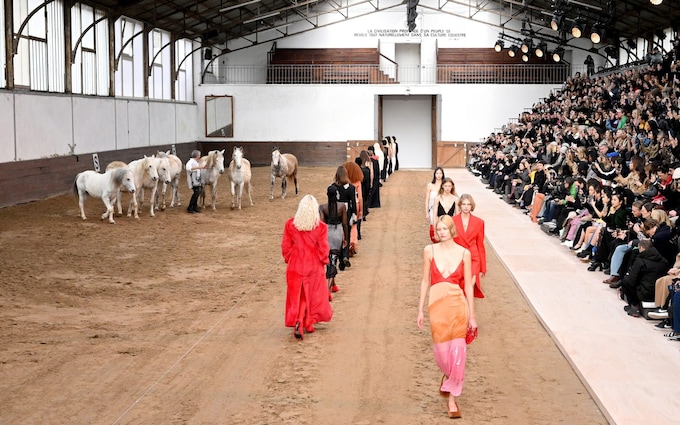
How do you get new ideas to innovate your shows ? Well, it’s funny; my inspiration comes when I clean out boxes when we’re on the road. It’s a manual work that I dont have to think about and my ideas come at that moment and, of course, also when I pray. Whereever I go the language of the horse is universal. We entertain people and I’m also enjoying myself.
Do you ever use tack when at home ? No, the horses are nude. I’m dressed. I feel their warmth against me – we become one.” ©
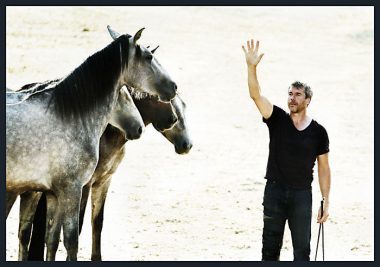
The days that really stand out
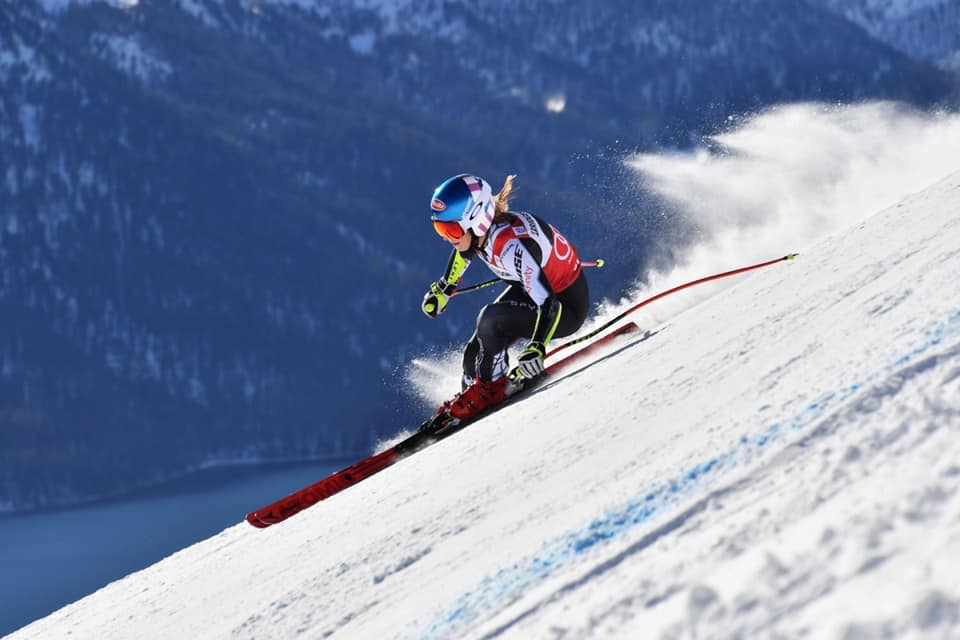 November 30th, 2018 was nothing short of spectacular for Mikaela Shiffrin: On Lake Louise in the Canadian Rockies she wins her first Super G, joining an elite group to win all five major disciplines in alpine skiing.
November 30th, 2018 was nothing short of spectacular for Mikaela Shiffrin: On Lake Louise in the Canadian Rockies she wins her first Super G, joining an elite group to win all five major disciplines in alpine skiing.
As Mikaela Shiffrin’s records keep piling up, she prefers to ski for herself rather than the results, she tells.
By Camilla Alfthan
AS THE YOUNGEST athlete ever to win Olympic gold in slalom, Mikaela Shiffrin has had some memorable moments in her stellar career. One day that really stands out is the day she won her first Super G – the alpine speed event in the World Cup series that she was missing.
“When I was a little girl I was dreaming of being able to win in all of the skiing disciplines and I didn’t expect that it would happen so quickly. And then to do it again the next week in St. Moritz was even more incredible. It was really special to know that all the hard work is paying off,” tells the 23-year old during a training break with her boyfriend in the Norwegian fjälls.
On the world circuit Lake Louise is one of the most quiet races, surrounded by endless forests of pines and the majestic ridge lines of the Canadian Rockies. Most people have to fly here and the stadium only has room for a couple of hundred fans – a stark contrast to the previous weekend in Vermont where almost 40,000 people attended.
“For me it’s really nice because you’re not focusing on all the distractions and who is around. You’re just doing your skiing. It’s almost like going back to when I was 12 or 13 and racing and the only people who were watching were the parents and the court workers,” tells Mikaela Shiffrin.
As the clouds were coming in when she was getting ready in the starting gate, her coaches feared that it was going to get dark and effect her run.
“I was like, ‘I don’t care if it is cloudy or sunny. I know that the weather can change. It doesn’t matter, I’m still going to follow my plan and ski how I want to. To really go aggressive and attack the mountain.’ When I have that mind set it’s a cool feeling. There’s a little bit of luck in it, too, but if you stop worrying about whether you’re going to be lucky or unlucky then you kind of take luck into your own hands.”
Just one week later, Shiffrin won her second Super G on the tough and tricky course of St. Moritz in Switzerland. She also won the parallel slalom – a new city event which means that skiers now compete for six disciplines instead of five which adds a lot to the schedule.
“The event itself is harder on our bodies than any other event. My back is still sore and it’s been five days now. I couldn’t ski for three days because I was totally done,” she tells with a shrug.
Mikaela Shiffrin attacking the mountain in Lake Louise in the Canadian Rockies.
For the American prodigy, skiing was always a way of life. She was only two and a half when her parents began to teach her at home in their drive way. Later, they took her to local championships with her older brother where she caught the skiing bug.
“My first memory is probably skiing in the Nastar ski racing programme, where there’s a lot of different mountains where anyone can go. You just start and they say who has the fastest time within your group. That’s a really fun thing to do. I was skiing with my brother and my parents. That was one of the first things that got me a passion for the sport. I always wanted to race and I always had that competitive spirit.”
Her boyfriend is the French giant slalom specialist, Mathieu Faivre that she has been dating since the summer of 2016.
“He really understands how it feels to be at the top level. There’s so much passion and we both want to win. If something goes wrong it’s so frustrating and heartbreaking. I think certain people would not understand; they’d think ‘whatever, who cares’ and he can help me in so many ways. One of the biggest things is being able to talk with him.”
Above all, Shiffrin skis because she loves the sport.
“Every event is different. It’s a like a puzzle and I love that part of it.”
“I love to go powder skiing and free skiing but right now my biggest passion is training and racing, and I love to feel the speed. Every event is different. When I’m working on my skis and my technique I feel how I’m improving and I see the results in the races. It’s a like a puzzle and I love that part of it – to piece the whole thing together.”
In 2018 she became the first skier ever to win 15 World Cup races within a year.
Her goal is not to win more world cups but to be one of the world’s best skiers of her time.
“If I think too much about my wins then I stop winning. I have a tough time thinking too much about the result and not about working and training to get better.
It’s about putting in the time and the hard work, but also doing it right so it works. A lot of athletes could win many races, but maybe their ski equipment is not quite at the right level to give them the speed that they need. That’s one small detail that can make a really big difference. It’s also managing you time to have the right amount confidence and right level of preparation so you have the right energy. I think we have good balance of that in my team. Right now it is working, but that is not always the case.”
Although the skier herself downplays her many feats, it hasn’t stopped the experts analyzing Shiffrin’s astonishing achievements. In 2018 she had a total of 51 World Cups as the youngest skier ever. If she continues like this she could beat Ingemar Stenmark’s record of 86 victories in just a few years. But that would not change anything, she reflects.
“Stenmark is one of the biggest legends in our sport and he’ll always be that.”
“Stenmark is one of the biggest legends in our sport and he’ll always be that. People who know nothing about skiing remember Stenmark. He made such a big impact and you can never take that away. You’re not able to compare, really. He was in a different sport. It has since evolved – the skis are different and the technology; all these things are different. If you’re the greatest now, maybe you’d have to have 120 wins.”
Her all time favourite is the American champion, Bode Miller for his style, which was sometimes very reckless and exiting, just like his personality. Now she’s the one who’s captivating huge audiences.
“It’s hard to believe because I’m inspired by others and I still feel like when I was 12 and watching Bode compete and hoping that maybe I could get his autograph on my helmet. For sure I’m at the level as one of the best skiers of the world. But it’s also very easy for me to remember those days, and feel that it is impossible for me to be in this position right now, because I still feel like that little girl.” ©

Skier Mikaela Shiffrin Presents New Longines Watch at Macy’s Herald Square in New York (PRNewsfoto/Longines)
Mikaela Shiffrin
Born 1995, Vail, Colorado, USA. Family Jeff and Eileen Shiffrin, brother Taylor. Profession Alpine skier. Skiing background Her parents were competitive skiers who took her to local championships where she could race. Current Leads the World Cup series. Travels With her team and some 70 pairs of ski.
Highlights
2013 Her first US slalom championship. 2014 First Olympic gold medal. 2017 First Overall world cup title. 2018 Olympic gold in giant slalom and silver in the alpine combined. First skier to win 15 World Cup races within a year. Most successful female Slalom skier of all-time (36 World Cup wins). First skier to win all five major alpine skiing disciplines of the World Cup plus the new parallel discipline. A total of 51 World Cup victories, as the youngest skier ever. 2019 Won two gold medals at the World Ski Championships in Åre – a Super G, and a record fourth-straight slalom title. 2023 Eclipses Stenmark’s long standing record with a stunning 88 World Cup wins. 2025 Wins her 100th World Cup in Sestriere, Italy, and launches a new initiative, “MIK100: Reset the Sport,” in partnership with Share Winter Foundation, aiming to raise $100,000 to help youth learn to ski and snowboard.
Favourite skiing destinations
Åre, Sweden. “A really nice mountain to go skiing. When the lake is frozen, there’s lake races, ice fishing and hockey. The town is really cute and Christmassy.” aresweden.com. Courchevel, France. “Very high end and expensive, with wonderful hotels, amazing food and a beautiful mountain with really nice powder skiing.” courchevel.com St. Moritz, Switzerland. “The town is beautiful, and there’s lots of après ski. It would be so nice to have a couple of days off where my boyfriend and I could just free ski.” stmoritz.com. Zermatt, Switzerland. “I’ve been there skiing with my parents. It’s a really cool and unique place with a glacier that you can ski on in the summer.” zermatt.ch. La Cortina d’Ampezzo, Italy and the Austrian side of the border. “It has perfect skiing and the topography is beautiful with the rock formations of the Dolomites. It’s a place we always love to go to.” dolomiti.org. Lappland. “I’d like to go back when it is dark most of the day and feels like Christmas. It’s a really different and cool thing that I think a lot of people would enjoy experiencing. Last year in Levi I saw a small green shift in the sky and I’d like to go back outside the town to see all the different colours of the Northern lights.” levi.fi
The story was published in Scandinavian Traveler.
MORE STORIES

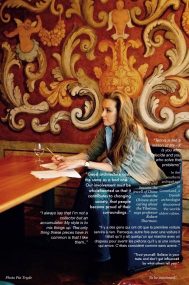
Swiss with a swish
Designer Alfredo Häberli has created a Swiss Gesamtkunstwerk with the best of the best from his own home country.
By Camilla Alfthan
THE SCENE of this contemporary space is situated in the outskirts of Copenhagen in the residence of the Swiss embassy – a 19th century house facing the sea which is inhabited by Benedikt Wechsler; an ambassador with a penchant for sports and modern design. Dressed in tailored suits and matching bowties he cycles to meetings on a renovated Swiss bicycle from the forties, complete with batteries. A breath of fresh air has also blown through the formerly conservative residence which has been turned into the coolest home on the block. The most iconic piece of furniture is perhaps Ubald Klug’s creme coloured Sofa Terrazza from 1972 which is juxtaposed with an asymmetric coffee table made of fake granite. Its’ hedonistic design of the seventies evokes images of the pop culture of the epoch.
“I received a call from Bern saying that the sofa is not embassy like. I had to reassure them that the ambassador does not smoke pot. If I did not have some humour I would not be doing this,” tells Alfredo Häberli with a laugh.
Ubald Klug’s not very embassy like Sofa Terrazza is in for a revival. In the adjoining room Frank O. Gehry’s cloud shaped lamp from Vitra hovers over the dining table.
As the curator of the project he imposed an important rule : All interiors had to be designed or produced in his native Switzerland and of the very best quality.
“I could not buy textiles just because they were inexpensive or choose a furniture cover because it was practical. At first I put a lot of pressure on myself, thinking that the Swiss design had to stand up to the Danish masters such as Wegner and Jacobsen which seemed an impossible task. But then I looked at contemporary design and I realized that Switzerland is doing better than the Danes. Our design is stronger,” he says.
Traditionally, the Swiss style is rational and functional. Colours are muted and the furniture is made using as little material as possible which is often aluminium. “It is a little cold and not very cosy if you don’t count the wooden chalets in the mountains. We don’t have the hygge of Denmark,” Häberli explains.
“At first I put a lot of pressure on myself, thinking that the Swiss design had to stand up to the Danish masters which seemed an impossible task. But then I looked at contemporary design and I realized that Switzerland is doing better than the Danes. Our design is stronger”
As a Swiss born in Argentina Alfredo Häberli prefers colors and warm material such as wood and velvet. Instead of the usual white walls, a Scandinavian classic, he painted each room in different pastel colours and picked design favourites from Swiss companies such as Vitra. He also selected things from his own studio including his iconic Moreso chairs and the humouristic Jill Tube which is made of aluminium tubes wrapped in knits.
Benedikt Wechsler in his Swiss surroundings which include Häberli’s elegant Moreso chairs and photographs from Fotostiftung Schweiz. Ph. C.Alfthan
As a design project the embassy is a first of its kind.
“Design is a cultural statement. In Denmark and Finland it was always used to market the country but we’re still not quite there though we have good designers and very good architects,” says Häberli who also included the garden in his Gesamtkunstwerk, filling it with Swiss furniture from different epochs. On the terasse there’s Hans Coray’s Landi chair from 1939 with polka dotted holes and another sculptural chair is Loop of 1954. Together with the eternit furniture on the lawn which absorb the heat of the sun they are testaments to the longevity of Swiss ingenuity. ©
Humour, a dash of colour and shoes (for the Swiss brand, Bally) are a part of Alfredo Häberli’s signature designs.

Tibet’s realistic optimist
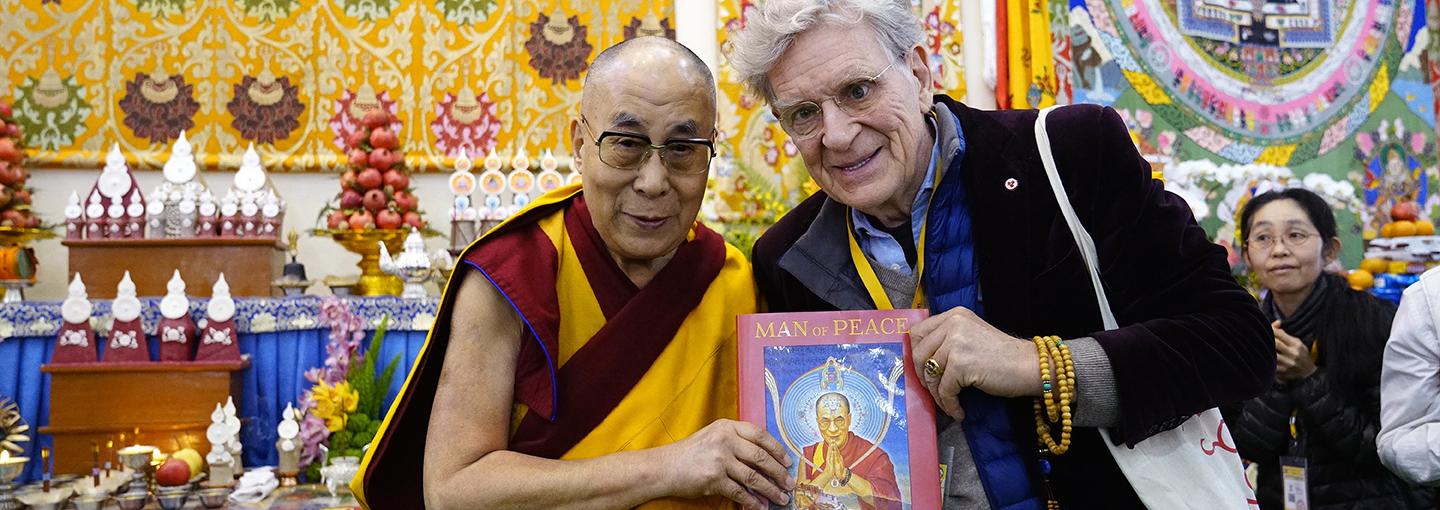 “Dalai Lama spreads happiness..If you think positively when you resist there’s a greater chance that you will succeed,” says Bob Thurman who calls himself “a realistic optimist in the current nightmare caused by leaders that are ignorant, greedy and stubborn”. Since the early sixties he’s been a close friend of the Dalai Lama. Last year he published the book ‘Man of Peace’ which introduces the Tibetan buddhism to the younger generations.
“Dalai Lama spreads happiness..If you think positively when you resist there’s a greater chance that you will succeed,” says Bob Thurman who calls himself “a realistic optimist in the current nightmare caused by leaders that are ignorant, greedy and stubborn”. Since the early sixties he’s been a close friend of the Dalai Lama. Last year he published the book ‘Man of Peace’ which introduces the Tibetan buddhism to the younger generations.
Despite Tibet’s many challenges, professor Robert Thurman takes the brighter view. China will gain from a good relation with the Dalai Lama. When that happens, Tibet will become the jewell of the Chinese empire.
By Camilla Alfthan
“THE TIBETANS are the baby seals of the human rights movement, they’re non violent and believe in word peace. But they’re still being crushed. The Dalai Lama told the Chinese a long time ago that even even though they were invaded in the 1950s they do not need independence if they’re allowed their own constitution and if they allow them to have a minority autonomy, they’d be happy to be a part of a Chinese union. But the Chinese are pretending the Tibetans want to separate to have an excuse to be hard liners,” tells Robert Thurman, founder of Tibet House in New York.
As a professor of religion at the Columbia University he has specialized in the Indian and Tibetan versions of buddhism. That religion and international politics are cut from the same cloth was a lesson that Thurman learned as a young Harvard freshman when he first met the Dalai Lama in his Indian exile. The iconic leader who is perceived to be the 14th reincarnation of his predecessor was only 19 when he negotiated his country’s future with China’s Mao Tse-tung. After several years of failed peace negotiations he fled to Dharmsala where he now functions as the Tibetans spiritual leader while he has handed over his political obligations to the Harvard educated professor, Lobsay Sangay.
Why is Tibet so important today? Tibet is very important because it is a colonial possession of China. And China is a big emerging power in the world trying to convince people that they’re not a threat and so good and great to do business with. They’re cracking down on Tibet along with the Uyghur people of Xian. How can they be believed when they are cracking down on their own people though Hong Kong, Vietnam, Philippines, South Chorea have relaxed their control of minorities? When China controls something they crush them; their culture, their freedom. If they say they have everything under control they’re completely crooked.
The Tibetans are second class citizens so Tibet is a symbol, though buddhism is different in Burma and Sri Lanka. Buddha is not threatening, it is not jihad. And yet they’re ruthlessly crushing them. So I think its an old fashioned policy of China. They’d like to change but haven’t decided how and they don’t want to make a mistake. In Scandinavia governments have learned that the Chinese are so insidiously trying to control the world media in the same way they control their own media, and have the own version of the press, and the history and future. They’ve realized that the Chinese won’t accept there’s free speech in so called democratic countries, and that they can’t suppress the people, so the do suppress them.
 Girl playing on the Roof of the World – photo Kevin Frayer for the Washington Post.
Girl playing on the Roof of the World – photo Kevin Frayer for the Washington Post.
Will that change? I think I’m one of the rare people who think things will get better soon. Because China wants to function on the world stage, they will get public relations advice and probably think they’ll get a dictator’s advice on how to lie. But instead they’ll learn that the best way to show that you’re nice is to be nice. Especially when you can, and they certainly can with Tibet.
There’s a very foolish fraction now in the politbureau who are crushing the muslim people of Xiang. They have to retract the angry, jihadist type by creating such a a harsh suppression. Tibet is way down the list, and has been since the 2008 Olympics. They cracked down on them very harshly, but it paled in comparison to other countries.
The Uyghurs are in a terrible state. A million people in detention are being educated to be good people and communist Chinese citizens, instead of being muslim. It never works, they’re very resilient. I think the president Xi does recognize this, but you can’t change suddenly, they don’t want to make a mistake and continue the Chinese way for colonial centuries, not realising that they can make public relations out of a good relation with the Dalai Lama.
“Tibet would be a test page of how you can support people who are non-Chinese and not crack down and chew them up as citizens in a nation machine”
Tibet would be a test page of how you can support people who are non-Chinese, and not crack down and chew them up as citizens in a nation machine. This would put people at ease in places such as Hong Kong and Taiwan tremendously. I think he realises that, President Xi – I call him Emperor Xi at this point, almost. People don’t realise that even emperors don’t have absolute power and that it takes time to change policies.
When could it happen? I’m very optimistic that this will happen soon and within the lifetime of the Dalai Lama. He’ll be 84 next year and there will be many headlines, I think, when they make the conditions appropriate so that he could visit his people in his homeland. They have to persuade him that he can go to see his people, that he won’t go to prison. He can only go there when China says publicly that they will change their attitude about him and about the people and about buddhism. President Xi said they need ancient culture, that there’s a need to rehabilitate Confucius, and his family is interested in buddhism. I have no doubt there will be change, but when? That’s always the question.
The Tibetans survived the cultural revolution, and prior to that the Great War of the fifties when they quarantined hundreds of thousands and they turned everything upside down with their class struggle reforms and the gulag. They survived all that and they’re still Tibetans and they’ll survive anything else, so I’m optimistic about the future.
There’s a terrible trend on the planet now that our government here is mostly amending by the partnering with dictatorships, and this is an unfortunate thing. Therefore the Chinese and their Communist Imperium might be interested – because of the resources in Chinese culture – about what a responsible emperor is.
They were buddhists for 1,000 of years, Confucius made a very honorable thing about being emperor. Things will turn around, and even here in the US.
It’s important that people are aware of it, and familiar with it, because a human rights revolution is different than a communist revolution or any violent revolution – it’s a revolution that speaks against oppression. It’s very important that Tibet’s claims will succeed, as it will provide an example for many other minority issues; that violence is not the solution, but that actual dialogue and mutual support is the way forward.
There’s so much going on in the world of today. Are people less interested in Tibet? No, Tibet is going way back to Shangri-La, Wakanda, the magical roots of the world, Alexandre Davide Neil; the great French explorer in the 20th century. It goes way back. That’s why the Chinese are trying to keep the Dalai Lama from going anywhere because he is so photogenic; people like him so much. He fills stadiums even if he’s not trying to turn anyone into a buddhist, he just wants people to have a better life. He specifically does not want them to shift away from their religion. In polls, his popularity is right up there with Pope Francis. It’s died down a little in terms of activism, but it’s still very strong.
What has Tibet given you in your life? I love Tibet, it’s my intellectual home. The home of the scientific mind and psychology. I’d been looking to Freud, Wittgenstein and through that the original Indian enlightenment book about the Buddha. I was not a very religious, and I’m still not.
The allure was more of a scientific and cultural side. You really find many things that are very deep in the Indian philosophy and science, especially in mental science, how you change the mindset, and how you deal with it. That’s what I found there, after Harvard : Great psychology and modules about the rules of relativity, biology with a soul and a mind instead of this ridiculous idea that everything is just atoms and molecules; where we’re trapped in the West at the moment.
So, I have a gratitude to Tibet’s cultural and scientific gifts to me. The Dalai Lama was my friend since early sixties, the pre-hippie days. I worked to let people know about it. It was a cultural level for me, not so much a religious or a political level, so I’m very happy for that. I feel Tibetans are incredibly endurable and very strong.
“Tibet will become the jewell of China when they start caring about the Tibetans”
They resisted for over sixty years – reforms, class struggle and a kind of brainwashing they did really intensely. When there was a brief window in 1983-87, when China was trying to show nicer things, they started to rebuild their temples and their technical skills were amazing despite the fact that they’d been criminalizing this for thirty years. They just want to be Tibetans and have their culture.
Tibet will become the jewell of China when they start caring about the Tibetans. They made some stupid decisions when they moved Chinese people and factories there to develop the area. The Chinese took all the benefits and they wrecked the environment, they looted it. Destroyed the rivers and now they have a big water problem. You can’t bite of your nose – you only have one. They’ve realized this at the very top leadership level but the implementation is complex, they have to figure out how to do this in terms of logistics and the ministries that are involved.
Photos Nicoline Patricia Malina for Harper’s Bazaar.
But they will do it and then Tibet will be a jewell, like Switzerland, and they’ll make a lot of tourist money. In the eighties, they had quite a good tourist income there. Then they started their crushing business by the late eighties, and they lost the foreign tourists and got Chinese tourists. But that does not bring in money, it just circulates it. The point is; they’d make huge amounts in mountaineering, hiking, winter skiing, and the health industry – it could be a huge industry.
The Chinese are not really communists. The politbureau is the imperial committee. And now their president has a lifelong period -the envy of Mr Trump. They will continue with socialism. Confucianism was also that, where everyone had their little land of 9 acres and paid one ninth of taxes to the state.
There’s the religious cult, Dolgyan Shogden opposing the Dalai Lama.. Everyone has to counterforce everyone, but it doesn’t work. No-one is winning a single war anymore. The information is too widespread and the weapons are too powerful, so you can’t win wars any longer. The decolonisation of the 20th century was not out of the good will of Churchill, it had to do with the impossibility with the modern technology and economy of oppressing people. It doesn’t work. Some always survive and then they’ll get back after you, that’s the way it is. Now we’re forced into a new global society and hopefully there will be a law abiding nest. If anybody is a pioneer it is the Scandinavians. They are the ball, the middle way between…
What are your thoughts on the Chinese architect, Zhang Ke who won a prize for his buildings by the Niyang river? He looks like a great guy. He did a great job, and as an artists I’m sure he appreciates Tibetan architecture and culture, and he made a modern version of that.
A lot of Chinese love Tibet, actually, a lot of communist party members have the Dalai Lama in their little closet there, they do! And it’s just a matter of time before they kind of deal with it. Then they have to deal with the integration of the Chinese buddhism and Tibetan buddhism because they are different. The popularity of Tibets buddhism makes some of the Chinese teachers a little worried. There will be dialogue. It will all work out, I’m pretty sure.
I get lots of Chinese students at Columbia, many undergraduates. They’re dying to learn about buddhism, they particularily love Tibet, the young ones go hiking there, they have Tibetan boyfriends or girlfriends. They go riding there, they like the colourfulness of the culture and don’t want to see it marginalised. It will all work out…
The Dalai Lama once said at at dinner party to people who had helped Tibet, “Thank you very much. But I want you to know that in the long run, if you want to help Tibet, help everybody else, too”. So that’s the attitude.” ©

